SURVIVAL MODE
HOW COMPANIES ARE FIGHTING - AND THRIVINGDURING THE EXTREME ENERGY COSTS CRISIS
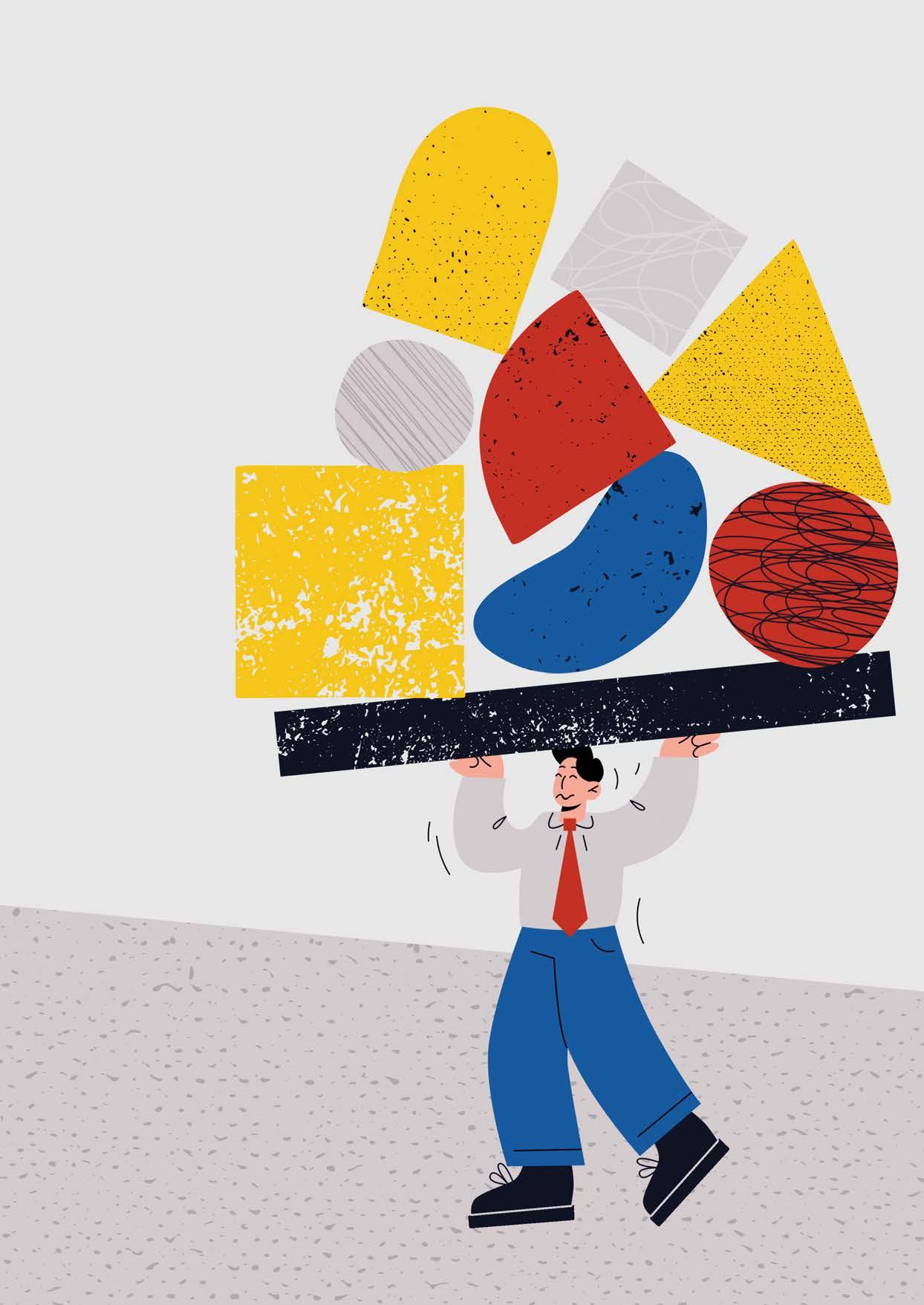
The


The
Since 1976, Convermat has been the leading global supplier of parent rolls of tissue to more than 80 countries worldwide. Our unparalleled market intel and strong network of strategic alliances, resources, and insider knowledge can further grow and strengthen your business to achieve higher profits.

We consistently maintain capacity balance
many of the leading global tissue players. Our extensive network of global
deliver a continuous flow of tissue at the most competitive prices
customers
market
speed, reliability, and integrity.
Our experienced team of seasoned professionals is equipped to handle all of your needs including inland and ocean transportation, import/export protocol, technical specifications, testing lab facilities, proprietary product development, foreign currency management, credit risk, and all relevant sales services.
In addition to our complete line of tissue, towel, napkins, and specialty paper we supply a comprehensive line of nonwoven substrates for medical, wipes, automotive, filtration, hygiene
and more.
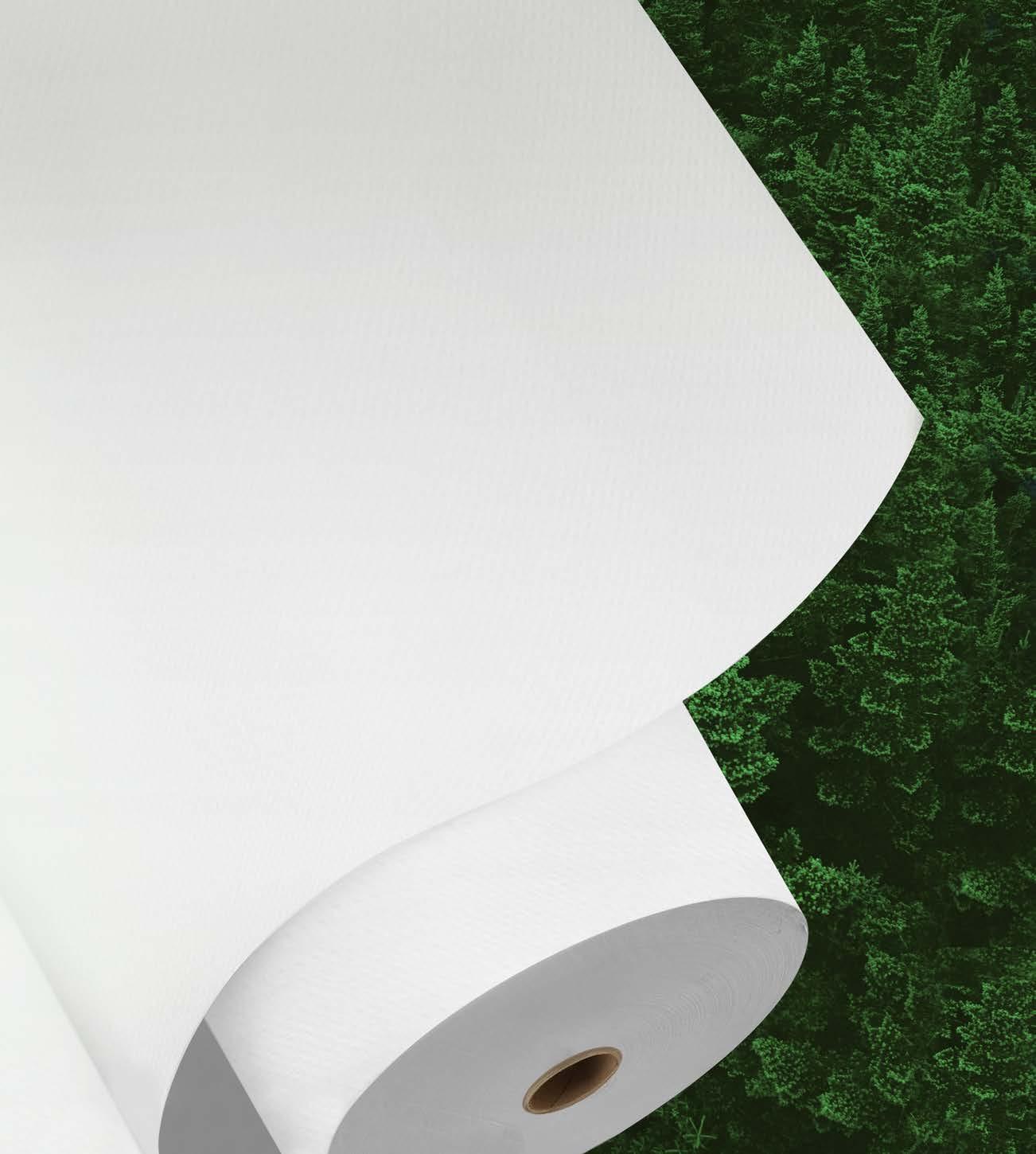
The tissue industry's famous resilience is facing up to the challenge.
Companies drawing up their action plans to see out the costs crisis. Every inch of businesses reviewed, huge investment in automation, unnecessary processes removed, sustainability plans accelerated, energy price hedges, increased stock volumes, price adjustments … and more. Report by Consumer Markets Analyst Simon Creasey.
News In Brief
A roundup of news from across the global tissue industry. To get the very latest news go to www.tissueworldmagazine.com.
Country Report: Turkey 12
Even in a stressed economy tissue is poised to survive and thrive. Among its many strategic pluses: tissue exports more than five times imports; a disciplined approach to expansion means fewer machines and more balanced capacity and efficiency; high costs of imported fibre under control; and high performance on average machine age, width and speed. By Fisher International.
Country Report: Turkey 15
As economic challenges increase, tissue looks for growth in private label, value for money products, local production, discounting, energy savings, and cutting-edge in research. By Euromonitor International.
Essel Cellulose and Paper Industry: Operations Report 19
Key growth area in waste paper recycling adds to Essel’s strong performance. Exporting to 60 countries across five continents with 175,000 annual capacity, the return to normal life has meant “serious increases in demand” boosted by relatively lower production costs. TWM talks to Converting Manager Bülent Can.
Europap Tezol Kağit: Operations Report 21
State-of-the-art-machinery provides “a big opportunity”. In three years, annual capacity rose from 95,000tpy to a projected 130,000tpy with an AHEAD 2.2S tissue line start up in 2023, boosting super-prime branded tissue products sold abroad. Alpay Yalçın, Export Sales and Operations Manager, talks to TWM about setting their sights on export potential.
Aktül Kagıt: Operations Report 25
Aktül Kagıt investments to boost production capacity to 210,000tpy. With a 70,000tpy TM planned for start-up in Q4 2022, once up and running the business will look to export its new production. TWM speaks to Factory Manager Ziya Karadeniz.

The challenge – a wedding dress made from just four rolls of toilet paper for Tabitha’s hen do fun. New bride Tabitha Perry O'Sullivan, an Investor Relations and Communications Manager living in London, recently celebrated her hen do by tasking her hens to create a wedding dress made from toilet paper. Here, she discusses how the fun led to a new appreciation of tissue
Raw material innovations: Technical Theme
WEPA Group first to use Miscanthus in production of hygiene paper; introduces second innovation using recycled cardboard into the market. Unbleached Miscanthus cellulose fibres combined with recycled office and hand towel paper, and unbleached fibres from recycled cardboard. Dr. Stefan Gräter, Head of Sustainability of the WEPA Group, talks to TWM.
Klabin’s southern softwood bleached market pulp, diversifying and differentiation in the fluff segment – innovation on absorbent products. A TWM report.
FOCUS ON: Australia and New Zealand
In transition: recovering from Covid, the market is learning how to handle rising costs and the government’s new green strategy. TWM spoke to Asia Pulp & Paper supply partners, Australia’s Sorbent Paper Company and Solaris Paper and New Zealand’s Cottonsoft.
How China’s Operation National Sword changed the global recycling market. During September’s Tissue & Paper Bangkok exhibition and conference, Moore & Associates Founder Bill Moore discussed the latest trends impacting the global tissue markets. Here, TWM summarises the key findings.
Operations Report
Aktül Kagıt investments to boost production capacity to 210,000tpy. With a 70,000tpy TM planned for start-up in Q4 2022, once up and running the business will look to export its new production. TWM speaks to Factory Director Ziya Karadeniz.
Page 25
Cover: An image in the style of Dutch painter Piet Mondrian's palette showing the balancing act of tissue companies during the energy costs crisis. Image by freelance designer Hazel Gage, hazelsayshello, UK.
Our challenge as a technology partner to the tissue industry is not only to offer solutions for conserving energy and raw materials within the mill complex, but also to offer solutions that help mitigate or replace GHG emissions from “upstream” sources of fiber, electricity, water and chemicals. Modifying the

approach flow system, high-performance roll covers, shoe presses, insulating the heads of the Yankee, and heat-recovery steam generator systems are just some examples of
broad portfolio.
Informa Markets – UK
240 Blackfriars Road, London, SE1 8BF, UK
Tel: +44 (0)20 7017 5000
Group Director
Chris Edwards: chris.edwards@informa.com
Senior Editor
Helen Morris: helen.morris@informa.com
Event Manager & Publisher
Tom Hill: tom.hill@informa.com
Executive Director
Chris Kilbee: chris.kilbee@informa.com
CEO
Margaret Ma Connolly: margaret.connolly@informa.com
Europe & North America
Silvio Arati
T: +39 02 4851 7853 sarati@studioarati.it
South and Central America
Selma Ugolini
T: +55(11)99904 5350 selma@gova.com.br
China, Hong Kong & Macau Jennie Zhan
T: +86 20 86660158 info-china@informa.com
is published bi-monthly. The subscription price is US$400 per year for 6 issues. Subscription is free for qualified subscribers in the tissue industry.
Please send address corrections to:
Informa Markets – UK

240 Blackfriars Road, London, SE1 8BF, UK
Tel: +44 (0)20 7017 5000 info@tissueworld.com
Subscription online at www.tissueworldmagazine.com
In Tissue World all measures are metric and all dollars ($) are US dollars, unless otherwise stated. Copyright 2022 by Informa Markets – UK. All rights reserved. All materials printed in Tissue World Magazine is owned by Informa Markets – UK and protected under the copyright act. No material may be reproduced in part or in whole without the prior written consent of Informa Markets – UK.
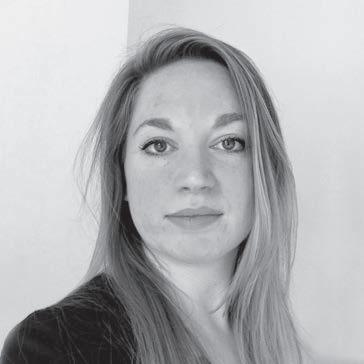
company executives need no telling how energy costs not seen in decades are impacting their businesses. They will, however, be keen to know how some of their industry colleagues are fighting back.
MarketIssues provides a snapshot of the immediate challenges, and reveals strategies employed to see out the ordeal.
Spain-based L.C. Paper has been operating for 140 years and exports to more than 40 countries on four continents. General Manager Pau Vila relates the startling figures of the last few years. For 20 years gas prices hovered between €12/MWh and €17/MWh. They are now around €222/MWh, and what was hopefully a peak at €350/MWh – a 2,000% increase. Historically, electricity prices moved between €35/MWh and €60/MWh. Now they are €300/ MWh to €400/MWh.
His monthly energy bill has risen, rapidly, from about €350,000 to upwards of €2,000,000.
Managing Director Khalid Saifullah says Star Tissue, UK, scrutinises “every inch of the business to help mitigate each crisis.” Negative margins are anticipated and, where possible, mitigated. Elsewhere across Europe, several mills have been forced to reduce production or close over the last few months, some temporarily and some permanently. In Germany one toilet paper company went into insolvency in September.
The responses? Huge investment is going into automation, unnecessary processes are being cut, innovation and productivity boosted. Sustainability projects planned are being brought forward and accelerated.
Poppies Europe, with an energy bill up by 300%, triggered the installation of solar panels covering 90% of the plant’s roof.
Scenarios such as further rampant price developments and potential energy shortages in Europe are now risk assessed and prepared for at Essity. A spokesman said: “In order to avoid and reduce the effects of possible disruptions, we implement a series of measures such as finding alternative fuels and increasing stock volumes. We also have energy price hedges in place and implement energy optimisation measures at all our production facilities.”
Pau Vila is deploying a number of contingency measures. In addition to accelerating the rollout of renewable electricity self-consumption, alternative combustibles such as biomethane are set to replace some gas usage. L.C. Paper too has hedged energy prices.
Oday Abbosh, Founder and Chief Executive of Better All Round, says his business has also endured massive inflationary pressures thanks to rising shipping costs, labour shortages and HGV driver shortages, but soaring energy costs have impacted most of all: “Energy prices have [been] a double whammy,” he explains. “It hits the cost of running our own operations as well as of course massively inflating the cost of paper and other raw materials purchased. We can see daily in the news the impact energy prices are having on everyone’s business and lives.”
When will the turmoil settle down? For Abbosh it is difficult to predict with any certainty what might happen in the coming months. Vila adds: “The winners and losers of this crisis are going to be shaped very much by luck: the lucky companies that happened to close a very good energy purchasing deal before the crisis without knowing what was going to happen; the lucky companies that had an energy supplier which didn't break their contract once the prices started climbing uncontrollably; the lucky companies that had enough cash or diversification to survive prolonged periods of time on negative margins or production shutdown.”
Shaped by luck, and also vigorous, modern, competitive and innovative companies.
Even in a stressed economy, Turkey’s tissue is poised to survive and thrive
Turkey exports – to 60 countries across five continents – more than five times the amount of tissue it imports. Its fabled location – poised at the confluence of commerce West and East and North and South – has served its trading history well, and is now taking on even greater status as diplomat and gatekeeper to the Black Sea. We will be calling it Türkiye soon enough. The government wants the country to take back its traditional name to cast off any links to the roasted bird served up at Thanksgiving and Christmas celebrations.
TWM’s Country Report talks to three tissue companies which, in relative terms given the costs climate, are investing and expanding as the pandemic’s worst restriction ease and the market heads back towards normality.
Every inch of businesses reviewed, huge investment in automation, unnecessary processes removed, sustainability plans accelerated, energy price hedges, increased stock volumes, price adjustments… and more. Report by Consumer Markets Analyst Simon Creasey.
the industry can do to mitigate against such hikes. Especially at a time when shipping, labour, packaging, pulp and other raw material costs are also on the rise, as the world lurches towards a recession caused in large part by spiralling inflationary pressures.
So how bad has the situation been for businesses in the tissue sector, what measures have they put in place to offset the impact and how bad might the situation get in the future - assuming we’re not over the worst of it just yet?
Simon Creasey Consumer Markets AnalystEven before Vladimir Putin’s “special military operation” in Ukraine, energy prices were starting to creep upwards. The conflict only served to exacerbate an already challenging situation across Europe and other parts of the world. All industry sectors have been negatively impacted by these increases and some have suffered more extreme hardship than others. The tissue industry, which is highly intensive in terms of energy consumption, falls into the latter category and has had to endure price rises that haven’t been witnessed in decades.
According to Pau Vila, General Manager at L.C. Paper, European gas prices have been stable for the last two decades hovering between €12/MWh and €17/ MWh. However, today the price of gas is around the €222/MWh mark and has reached peaks of €350/MWh - a 2000% increase.
And because gas is used to generate electricity the price of the latter has also risen rapidly. Vila says electricity prices in Spain have historically hovered between €35/MWh and €60/MWh, but they are now between €300/MWh and €400/MWh - an increase of between 6x and 10x.
“In monthly terms, this means our average energy monthly bill has moved from around €350,000/month to upwards of €2,000,000/month, something which is very hard to digest at the speed at which it has happened,” says Vila.
Increases of this scale in such a short period are unprecedented and there is little
The picture differs from country to country globally, but Europe, and in particular the UK, have had a tough run of things in the last few years in terms of economic turmoil. On top of issues relating to Brexit and the Covid-19 pandemic, there have been climate disasters, supply chain issues, labour shortages, rising insurance costs, raw material inflation and interest rate hikes. It’s little wonder Khalid Saifullah, Managing Director of Star Tissue, says manufacturing businesses have had a torrid time over the last few years and that doing business in today’s volatile and political climate has been exhausting.
“It’s times like these when quotes like the one from Donald Rumsfeld [secretary of defence under US President George W Bush] start making sense,” says Saifullah. “There are known knowns, things we know that we know; and there are known unknowns, things that we know we don't know. But there are also unknown unknowns, things we do not know we don't know.”
He adds that the resilience of his company has been sorely tested due to this whirlwind of different economic issues and it has forced him to “review every inch of the business to help mitigate each crisis as it fell”.
Oday Abbosh, Founder and Chief Executive of Better All Round, says his business has also endured massive inflationary pressures thanks to rising shipping costs, labour shortages and HGV driver shortages, but the thing that’s had the single biggest impact on the business has been the soaring cost of energy.
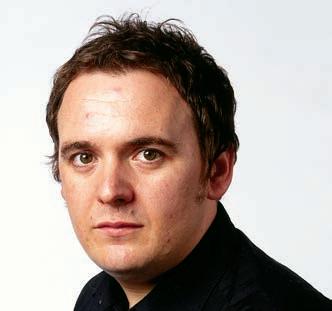
“Energy prices have [been] a double whammy,” he explains. “It hits the cost of running our own operations as well as of course massively inflating the cost of paper and other raw materials purchased. We can see daily in the news the impact energy
prices are having on everyone’s business and lives right now.”
For Pau Vila, the other big issue all tissue companies have had to grapple with is the growing cost of raw materials like pulp, due to the fact that pulp production is also energy intensive.
“So, intuitively, if the energy cost situation was fixed, it is likely that pulp prices would also decrease significantly,” says Vila. “The very high freight costs have not helped in that regard, since if freight costs allowed for it we could have imported pulp from places where energy costs were not so severe, but that was not a feasible option as the sea freight costs also climbed considerably. The same situation applies to chemical products, even though they represent a much lower percentage of the overall cost structure of the tissue industry compared to energy or pulp.”
The fallout from these increases have been stark. Vila says whenever prices increased rapidly his business inevitably entered periods of negative margins, which impacted on L.C. Paper’s Q4 2021 and Q1 2022 financial performance. In addition, several mills have been forced to close over the last few months, some temporarily and some permanently.
There is a looming threat the inflationary pressures could quickly deteriorate into bankruptcies as recently happened with German toilet paper company Hakle, which fell into insolvency in September.
Different companies have dealt with the price rises in different ways to ensure their survival. Saifullah says that at his business “huge investment has gone into automation removing unnecessary processes and improving productivity – removing human touch where possible”.
Poppies Europe has also gone down the investment route. According to Armindo Marques from Poppies, the energy bill for his business has increased by more than 300% and that triggered an investment in solar panels to cover 90% of the manufacturing plant’s roof space to offset some of the cost.
“It was always the plan in our road to sustainability, the energy crisis put us ahead of our own agenda,” he says. Marques adds that “to maintain or at least slow down the erosion of our margin
we had to become more agile and flexible in our cost and price structure, we must review all pricing on a regular basis”.


The business also recently invested in another TV840 OMET Twin line couple with a Multipack wrapper to just run 40cm 8-fold products - the 18th line dedicated to napkin production. This investment in new technology has helped to improve the energy efficiency of the business.
Most businesses are thinking creatively to come up with solutions to address inflationary pressures. A spokesperson for Essity says: “We carefully prepare and assess the risks and effects of different scenarios, such as rampant price developments and possible energy shortages in Europe. In order to avoid and reduce the effects of possible disruptions, we implement a series of measures such as finding alternative fuels and increasing stock volumes. We also have energy price hedges in place and implement energy optimisation measures at all our production facilities. Essity is a company with a wide production footprint across the globe. Through our network of mills, we also have the possibility to move mother reels and finished goods between countries and sites.”
As for L.C. Paper, Vila says his business has deployed a number of contingency measures. In additional to accelerating the rollout of renewable electricity self-consumption it has incorporated alternative combustibles such as biomethane as a replacement for some of its gas needs and ‘hedged’ energy prices “whenever the future markets had reasonable purchasing indexes, which has not always been the case,” says Vila. “Despite those measures, the speed and severity at which the crisis unfolded made it very difficult to keep up with the contingency and so the business has suffered from very degraded margins”.
The business has also made “great efforts” to pass price increases on to its customers and Vila says that whereas around 18 months ago the average tissue parent reel price was around €900 per tonne the company is currently selling at €2,100 per tonne. “This has represented a huge effort for both our company and our clients, which are also suffering from this situation,” says Vila.
Better All Round’s Abbosh says his business works “collaboratively with all our customers in a transparent fashion to agree price adjustments as needed. No one likes a price rise just to cover rising costs, especially in these challenging times for households”.
The challenge Abbosh and his industry peers face is establishing when the current turmoil impacting the market might settle down. Abbosh admits it’s impossible to predict with any certainty what might happen over the coming months as we head into winter.
It’s a view shared by Saifullah who says it’s difficult to know with any certainty what new disaster is lurking around the corner. “Just when we think the worst is over a new worst comes and hits us in the face. We can plan for the known knowns, mitigate some of the known unknowns, but we cannot do anything about the unknown unknowns and unfortunately these seem to be growing,” he adds.
Vila also thinks that there could be further pain on the cards in the coming months and we could see a number of businesses in the sector fall by the wayside due to the combination of challenging economic factors.
“The winners and losers of this crisis are going to be shaped very much by luck: the lucky companies that happened to close a very good energy purchasing deal before the crisis without knowing what was going to happen; the lucky companies that had an energy supplier which didn't break their contract once the prices started climbing uncontrollably; the lucky companies that had enough cash or diversification to survive prolonged periods of time on negative margins or production shutdown,” says Vila. “This is a worrying sign to me, since we are going to see failing companies which are overall modern, competitive and with a mature product and market - there is currently no institutional support to avoid those industrial collapses.”
The industry could be in for a long hard winter ahead.
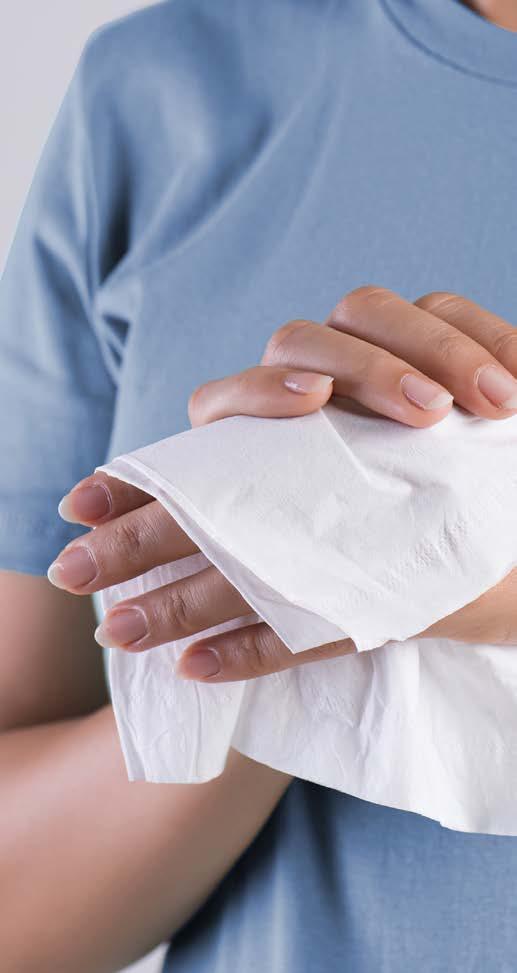
news from
global tissue industry.

Price hikes: Essity announces increases all product categories and markets following “significant” energy price increases in Europe.
Essity announces price hikes in response to energy cost pressures
Essity has announced price increases for all product categories and markets following a raft of energy price hikes for electricity and gas in Europe.
Prices for electricity and gas have risen sharply in Europe since July 2022, while costs for the company’s raw materials such as pulp have also “risen significantly” in the third quarter.
The business said that following
these additional cost pressures, it would announce a new range of price increases.
Magnus Groth, President and Chief Executive, Essity, said: “The cost headwinds have worsened further.
“We will manage this situation through new comprehensive price increases and energy price surcharges and are continuing to invest in our strong offering under leading brands and to supply essential hygiene and health solutions to Essity’s customers and consumers every day.
“The timing and degree of the price increases will be managed locally.”
He added that the business was also preparing and assessing the risks and effects of different scenarios, such as a rampant energy cost development and possible energy shortages.
“We have implemented a series of measures such as finding alternative fuels, increasing our stock levels and leveraging our European wide production network,” he said.
Metsä Tissue announces curtailments in tissue production
Metsä Tissue has said the European energy crisis has forced it to make additional curtailments in tissue production.
Earlier this year the business announced temporary production stops at its Kreuzau mill in Germany and its Zilina mill in Slovakia due to “extremely high energy prices” driven by the energy crisis in Europe, where it had to curtail production for several days.
As of September, the company said the situation has been “continuously
Tissue World has launched a series of webinars in the run up to Tissue World Düsseldorf, the world’s largest exhibition and conference for the global tissue industry.
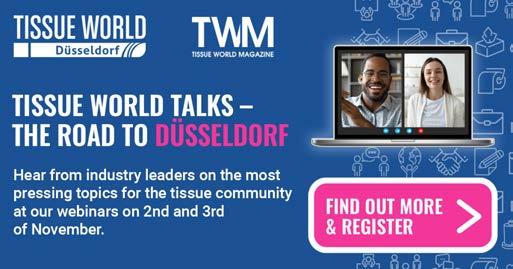
The “Tissue World Talks” virtual Senior Management Symposium will be broadcasted live on 2 November 2022 at 10am GMT, discussing supply chain dynamics, geopolitics, consumer behaviour and leadership strategies.
Fisher International’s Senior Consultant Urban Lundberg and Euromonitor International’s Head of Research Ratna Sita will lead the discussion, which will last for 30 minutes with an additional 10-minute Q&A section to end the session.
Challenging, interesting, unprecedented – we invite you to bring your curiosity, ideas and questions to contribute on the future direction of the tissue market. The Technical Sessions second webinar will be held on 3 November at 10am GMT.
Speakers will be announced in due course and the sessions will discuss the current challenges for running tissue mills – not only but especially in Europe – and how they are mounting.
Among them topics such as interrupted supply chains, the threat of discontinued gas supply in several countries, and peaks in main cost components like fibre, gas and electricity, will be up
for discussion. Demand for tissue remains strong but how do you strategize when the pressure is mounting from so many directions? Perhaps sustainability projects will go on hold? Or would that be counter-productive? It’s time to talk about implications and potential consequences but also possible solutions. Together with key industry leaders and you in the audience let’s discuss the best way forward during Tissue World’s virtual events. To register for the event, you can use the QR code above.
worsening and is impacting all of Metsä Tissue’s markets in Europe and is especially demanding on the company’s Western and Eastern European mills”.
It added that with the high energy cost inflation, “further production curtailments are likely, and may also impact the availability of daily tissue products in the markets as substantial amounts of daily production losses will occur”.
Tobias Lüning, SVP Central Europe, Metsä Tissue, said: “To mitigate the situation we have explored all possible energy efficiency improvement actions, and mitigation actions to replace gas with alternative energy sources are on-going.
“We have also been forced to revise our offering and the crisis will also speed up the move towards fresh fibre focused strategy, which enables lower energy use in the paper making, compared to recycled fibres.”
The business added that tissue profitability “will continue to be reviewed on a daily basis, and the high energy costs will most likely continue to cause additional temporary production shutdowns”.
Historic German tissue manufacturer Hakle has filed for self-administration insolvency proceedings after facing “copious challenges” including increased energy prices that it said had “cornered the company”.
With an almost century-long history, Hakle said its move into administration allows it to start restructuring with the intention of repositioning itself in the German tissue market.
Business operations will continue entirely
during the initiated proceedings.
Volker Jung, Managing Director of Hakle, said: “Self-administration offers us the necessary flexibility and pace to sustainably restructure our business and reposition it in the interests of our employees, customers and creditors.
“We are confident that the realignment will succeed in these challenging and historical times of energy crisis and that we will be able to further develop with the help of the dedicated work of our employees and our strong innovative power.
“It is about preserving the site and the related jobs.”
The tissue paper manufacturer with its traditional brands such as Hakle, Hakle Feucht and Servus said it faces “copious challenges” in the coming months.
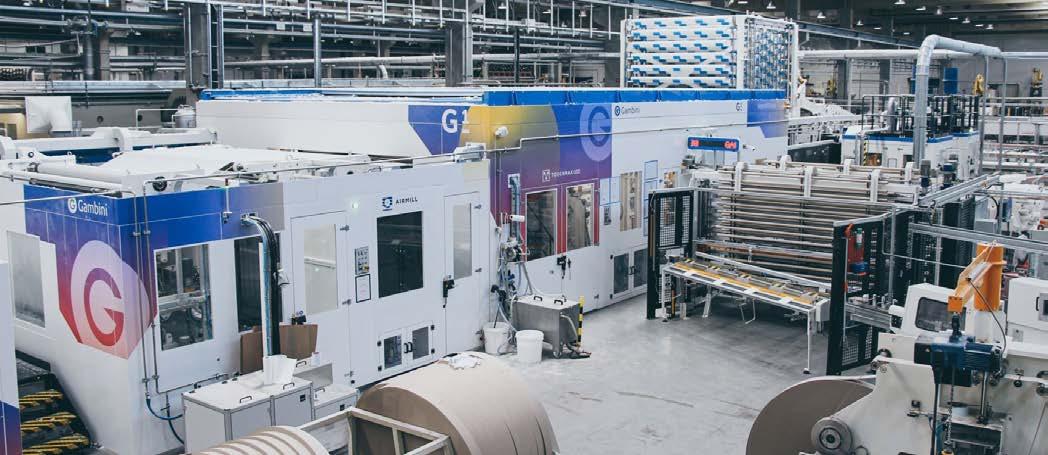
Jung added: “We took the first steps to stabilise the company immediately.
“We have already comprehensively informed our employees about the current situation and the proceedings at a work meeting, and we will accompany and support them during these times in the best possible way.
“As a result, the entire workforce and the worker’s council have expressed their support for the restructuring proceedings.
“This response gives us the necessary strength and support for the tasks ahead.”
Jung said that recent energy and material prices had “cornered the company. We fell into the undertow of current events: the energy-intensive paper industry has been subject to severe upheavals in the global raw materials, logistics and energy markets since the beginning of the 2020 Covid-19 pandemic.
“As a result, those companies have
been struggling with sharply increased challenges, especially in the gas and electricity sectors, for three years.
“Further events in 2022 have meant that the situation may be considered an intensification of historic dimensions.
“It has not yet been possible to pass on the massively increased transport, material and energy costs to a sufficient economic extent to customers in the food retail and drugstore sectors.”
Established in 1928, Hakle has been continuing an almost century-old tradition by returning to management as a familyowned company after a private equity investor group acquired the company in 2013.
It has produced numerous innovations in tissue paper, such as the paper packaging for toilet paper and kitchen paper used again for the first time in the German market in 2019 and the world’s first internationally award-winning product development of a tissue paper with a proportion of new sustainably and regionally produced fibres.
Hakle said it used 60,000 megawatt hours of gas and 40,000 MWh of electricity every year, and when the rise in energy costs came as quickly and as high as they did, Jung said the business was unable to pass them on to consumers.
German producer prices have risen to their highest level on record over recent weeks, as soaring energy prices continue.
Reports have said that energy prices were up 139% compared with last August and by 20.4% month-on-month.
The WEPA Group has increased production of its soft and absorbent paper products after investing in a Gambinisupplied converting line for its Leuna plant in Germany. The converting line can produce high quality hygiene paper at production speeds of 700 metres per minute and is geared towards kitchen towels. With the investment, the company said it can “continue to offer customers innovative products of the highest quality, and to simultaneously act sustainably”.

Harm Bergmann-Kramer, member of the WEPA Group Management Board, said: “The plant is unique in Germany and sets new standards for the quality of kitchen towels, while at the same time using low quantities of raw material. With Gambini’s innovative AirMill technology that includes automatic-change embosser and the very latest rewinder technology, the line is technologically state-of-the-art. It is a further investment in the WEPA Group’s technology leadership and an important component in achieving our sustainability goals with regard to sustainable production.”
The Leuna site is one of five German locations for the business and produces toilet paper as well as kitchen towels.
UK
K-C announces “first of its kind” green hydrogen project
Kimberly-Clark (K-C) is to launch a breakthrough £40m green hydrogen project
at its Barrow-in-Furness plant.
The company has signed an agreement with Carlton Power to supply hydrogen to the site in a bid to reduce its reliance on natural gas as part of its global decarbonisation strategy.
K-C said the Barrow Green Hydrogen scheme is the first of its kind in Cumbria and is expected to be up and running in 2025.
This project will initially feature a 35 MW (megawatt) electrolyser which is expected to produce around 3,500 tonnes of hydrogen every year, which K-C said will reduce 25,000 tonnes of greenhouse gas emissions – equivalent to taking 580 trucks off UK roads annually.
The hydrogen will be produced by the electrolyser using electricity that is generated from sources of renewable energy, primarily wind and solar power.
Construction of the Barrow Green Hydrogen project is contingent on securing financial support from the UK Government via its Hydrogen Investment Package (HIP).
K-C recently announced plans to decarbonise around 80% of its electricity supply through a Power Purchase Agreement and said the move will lead to the construction of a new onshore windfarm in Scotland that will start operating in early 2023.
Dan Howell, Vice President & Managing Director, Kimberly-Clark UK & Ireland, said: “Green hydrogen is a significant next step in decarbonising our operations and delivering our ambition of 100% renewable energy by 2030 in the UK and Ireland.
“Kimberly-Clark aims to lead the way on sustainability and deliver our purpose of
Better Care for a Better World.”
Oriol Margo, Sustainability Transformation Leader for Europe, Middle East, and Africa at Kimberly-Clark, added: “We understand the importance for us to lead in the development and deployment of effective decarbonisation strategies as our sector is energy intensive.
“This project will reduce the reliance on natural gas across our UK manufacturing facilities by up to 30%.
“It is an exciting opportunity and demonstrates how cooperation among a wide set of stakeholders from business and government is critical to making green hydrogen commercially viable.”
Essity has announced a new organisation and changes to the Executive Management Team in order to “strengthen its competitiveness and increase efficiency”.
Effective as of 31 December 2022, the new organisational structure will comprise of four business units:
• Consumer Goods Americas
• Consumer Goods EMEA
• Professional Hygiene
• Health & Medical
Consumer Goods Americas will include consumer tissue, baby care, feminine care and incontinence products retailed in the United States, Canada and Latin America.
Andres Gomez, currently Vice President Sales and Marketing Hygiene Andean and Caribbean within Essity, will be appointed







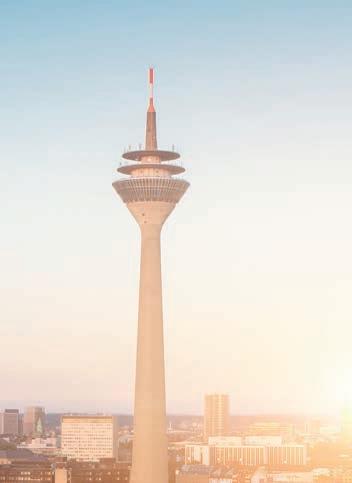




President Consumer Goods Americas.
The Consumer Goods business unit headed by Volker Zöller remains unchanged but will be renamed Consumer Goods EMEA.
The business unit Professional Hygiene will also include the Latin America Professional Hygiene business. Pablo Fuentes, current President Essity Latin America, will assume the role of President for this business unit.
He succeeds Don Lewis, President Professional Hygiene and member of Essity’s Executive Management Team, who Essity said has decided to leave the company. Lewis will step down from his position by the end of 2022.
The business unit Health & Medical Solutions will also include the Latin America medical business and be renamed Health & Medical, headed by Ulrika Kolsrud. The global unit Global Operational Services will be transformed into – Digital and Business Services. This unit will be headed by a Chief Digital Officer. Global Procurement, currently part of global unit Global Operational Services will be integrated into Global Supply Chain, headed by Donato Giorgio.
Robert Sjöström, currently President Global Operational Services, will take up a new role within Essity and leave the Executive Management Team.
Magnus Groth, Essity President and Chief Executive, said: “These changes will streamline our organisation which will increase our efficiency and capability to leverage innovation and digitalisation across Essity, and strengthen the focus on our consumer products categories in the Americas.”
Vinda, Essity Australasia and Knix will not be affected by the changes, and Essity Group Functions and global unit Global Brand, Innovation & Sustainability remain unchanged.
Essity reaches agreement following New Zealand strike action; restarts production
Essity has reached an agreement with employees who went on strike at its production plant in Kawerau, New Zealand, and confirmed that production at the tissue plant has restarted.
The strike had been initiated in September by the country’s Pulp and Paper Workers’ Union concerning disagreements in wage negotiations, with the union demanding a pay rise to offset inflation.
Employees at Kawerau paper mill have accepted an offer from Essity in line with
the Employment Relations Authority’s recommendations, ending several days of facilitated negotiations.
Kawerau is the last remaining paper production and manufacturing plant in New Zealand, supplying nearly 50% of the market – the rest is made from imported paper.

Essity’s General Manager at Kawerau Peter Hockley said the agreement allowed production to restart on 19 September: “The focus for Essity now is on the long-term future of the Kawerau mill and rebuilding our relationships with the mill workers.”
The pay agreements will see a 5% increase in 2022 resulting in a $4,000 lump sum, a 4.5% increase in 2023 resulting in a $3,000 lump sum, and a 4% increase in 2024. The agreement will then expire in July 2025.
Economic pressures in New Zealand have seen one other major plant recently close; in June 2021, Norske Skog announced it would permanently cease production at its 150,000tpy Tasman newsprint mill and sell the assets. Another site has reduced jobs and pay rates to stay competitive, and in the last 12-months two other suppliers have left New Zealand because of cost pressures.
Over recent years, Essity has invested $130m in plant upgrades at the Kawerau mill. A further $15m of investment to upgrade the plant’s paper machines and significantly reduce the mill’s carbon emissions is also planned for the near future. Essity declined to comment further.
IMA TMC has sold two palletising lines to a confidential Italian customer active in the tissue rolls market and with a strong presence across Europe. The supplier said that one of the key factors that made the customer choose its palletising lines is the “very compact layout that IMA TMC offered” due to the NEST gripper head, which it said operates by picking product layers without
any side pressure.
A spokesperson for IMA TMC said: “The lines are capable of running in Display Ready Pallet (DRP) configuration at high speed, with four-rolls packs. This new installation was a real challenge due to the restrictive plant size and the complexity of the layout. No-one in the market can offer a gripping layer head in such a small operating space as IMA TMC.”
The two lines sold are completed by the patented smart gripping head NEST. The supplier said this technology “innovates the traditional pliers, featuring unidirectional chains and lifting products from below.
“NEST also has the advantage of having the same overall dimensions both in withdrawal and in storage with the concept ‘ZERO PRESSURE’. This makes it possible to have up to 50% less space than a parallel opening gripper and to be able to create multi-line and multiproduct palletising solutions in smaller spaces.”
First Quality has entered into a threeyear agreement to source carbon-free electricity for all its manufacturing facilities in Pennsylvania. The company said the move will reduce its annual greenhouse gas emissions by 267,000 metric tonnes annually, equivalent to taking 60,000 cars off the road each year. John Rohlf, energy director at First Quality, said: “First Quality is committed to reducing our carbon footprint and creating a more sustainable future.
“Utilising carbon-free electricity is one of many solutions in our mix and an ideal option for our Pennsylvania sites. This is a win for the environment and a major milestone in our sustainability journey.”
First Quality will source electricity from a utility provider that operates carbon-free nuclear power plants, supplying enough carbon-free electricity to the Pennsylvania grid to power 100% of its manufacturing facilities in four locations.


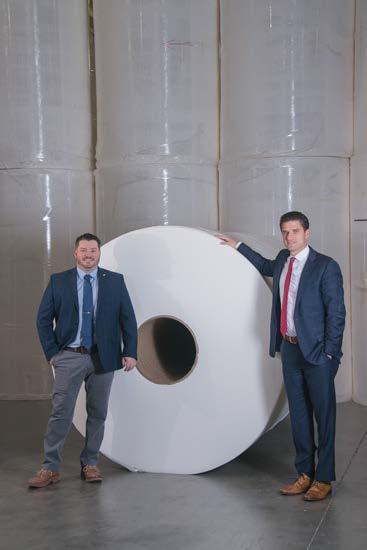
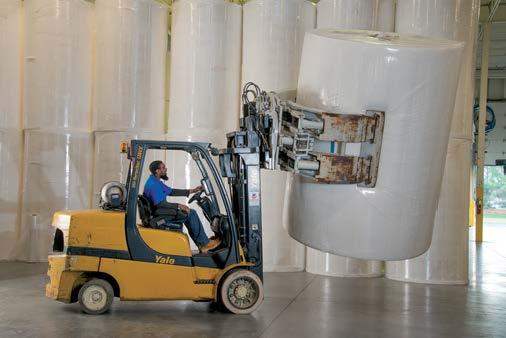


Among its many strategic pluses: tissue exports more than five times imports; a disciplined approach to expansion means fewer machines and more balanced capacity and efficiency; high costs of imported fibre under control; and high performance on average machine age, width and speed.
Turkey's tissue business is featured about every two years in this column, reflecting its growing economic focus on tissue exports and position as a bridge between Europe and the Near East. In addition, Turkey's cultural influence from the Muslim Ottoman Empire over more than 600 years enables the country to influence modern tissue consumers in regions beyond the reach of Europe or North America.
Many economic factors affecting Turkey's economy and business remain the same – high inflation, unemployment, and weakness in its currency (Lira). However, many things have since changed.
A new land war in Eastern Europe thrust Turkey into the roles of diplomat and gatekeeper to the Black Sea. This war has dramatically upset global energy prices that are still changing tissue economics as countries move back to coal and ahead to alternative green energy sources. Turkey has also been renamed “Türkiye” to reflect
its language better and differentiate it from the North American bird misnamed four centuries ago by London fowlers to make it sound more exotic.
While the onset of the global Covid-19 pandemic disrupted many economies all over the world, Turkey fared rather well economically through the pandemic, with a jump in GDP per person in 2021, as shown in Figure 1. The population also continues to grow at an estimated rate of 0.67% in 2022 – a slow growth that is ahead of most of Europe and North America. These factors will continue to support domestic tissue demand with a growing consumer base and spending power.
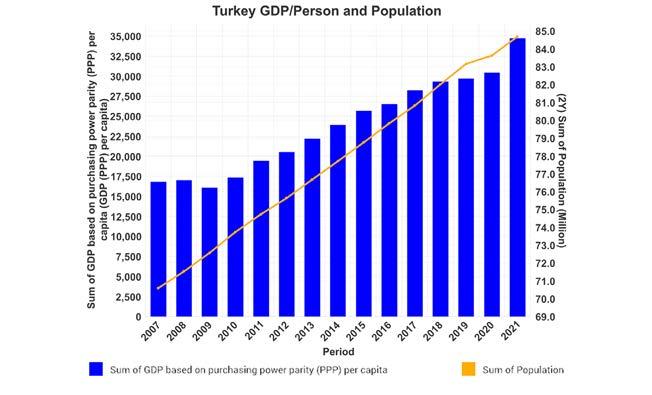
Figure 2, however, presents a less optimistic view of the economy as inflation started to cool in 2020, only to reignite in 2021. 2022 is expected to be much worse too as unemployment remains elevated. These factors have created a stressed economy in Turkey, affecting tissue exports
Bruce Janda Senior Consultant, Fisher International
and market pulp purchases made with the devalued Lira. Turkey relies on imported energy, but has some domestic energy sources including coal, oil, and gas. The new Turkish-Azerbaijani Trans-Anatolian gas pipeline is helping diversify energy sources and provide some protection from energy price shocks.
Turkey's tissue imports and exports are shown in Figures 3 and 4. Based on 2021 data, Turkey exports more than five times the amount of tissue it imports. Each trade partner country with a greater than 5% share is shown to identify key trading partners. Germany, Italy, and Portugal were the leading tissue suppliers in 2021, as shown in Figure 3. Figure 4 on the other hand shows the tremendous growth of tissue exports since 2007, with the United Kingdom continuing to be Turkey's largest customer, followed by Greece, the United States, and Bulgaria. Turkey's tissue producers have continued to implement a disciplined approach to capacity expansion, as shown in the waterfall chart in Figure 5. This chart shows the number of machines added (represented as the green bars) and the number of removed machines (represented as the red bars). Fisher International
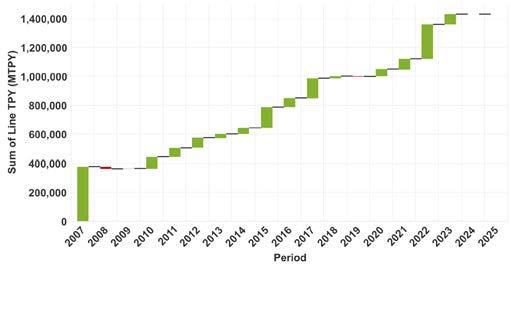
forecasts that three more machines will be removed from service in 2023 with one more shutdown in 2024. The net result is fewer machines but more capacity and efficiency for the Turkish tissue business. Turkey's tissue production continues to focus on consumer grades of bath, facial tissue, and towels to support both export and domestic demand, as shown in Figure 6. Again, this is very similar to what we’ve observed in previous reports.
About one-quarter of Turkey's tissue-producing sites have some recycled fibre integration. Still, the total deinked and non-deinked fibre is only about 6% of the tissue fibre consumed. Figure 7
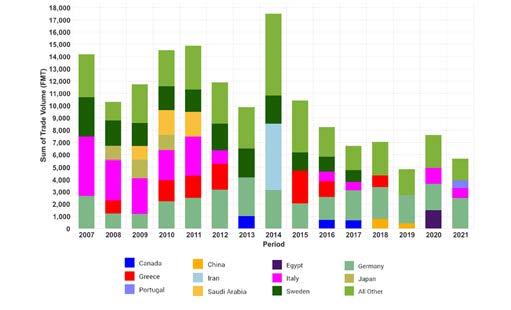
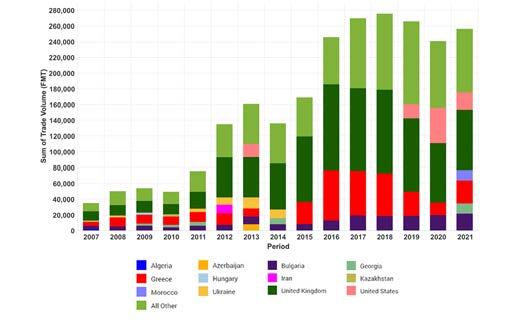
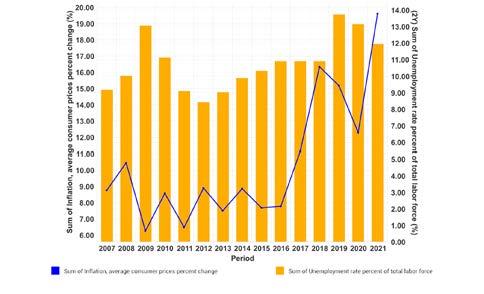
shows the breakdown of fibre sources, including southern and northern hardwood and softwood pulps, and Eucalyptus and tropical hardwood. As we can see, the most common pulp is southern hardwood.
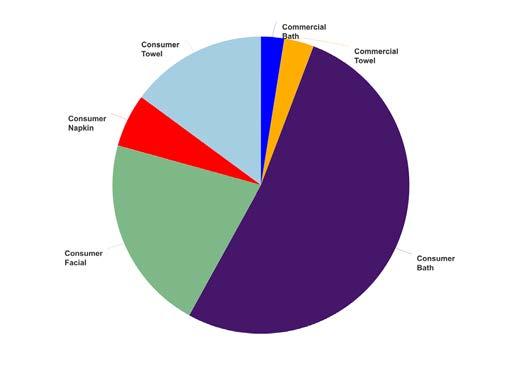
A comparison set of tissue countries was assembled to include some of Turkey's tissue suppliers and customers to facilitate an analysis of Turkey's competitive strength. Figure 8 shows the average tissue machine technical age (X-axis) and wire width (Y-axis) for each country in the selected competitive set. The bubble size for each country is proportional to the total volume of that

DESPITE TURKEY'S CURRENCY AND INFLATION PROBLEMS, THE TISSUE BUSINESS CONTINUES TO BE POISED TO SURVIVE AND THRIVE. THE HIGH COST OF IMPORTED FIBRE IN LOCAL CURRENCY SEEMS TO BE UNDER CONTROL AND THE NEW TISSUE CAPACITY PROVIDES EXCELLENT COMMERCIAL VIABILITY FOR THE FUTURE. IN ADDITION, DISCIPLINED TISSUE MACHINE REPLACEMENTS HAVE MADE TURKEY COMPETITIVE WITHOUT OVERSUPPLYING THE MARKET.
country's tissue production. The country has the newest tissue fleet measured by average technical age. The average width of its tissue machines is similar to the United States and the United Kingdom. The other tissue machine quality measured to indicate productivity is line speed. Turkey also wins this race, with only Germany in a close second.
Figure 9 shows Turkey has the lowest cash cost position in the selected competitive set, with Portugal close behind and Germany and the United Kingdom possessing the highest average costs. The stacked bars indicate that energy costs are higher for Germany and the UK.

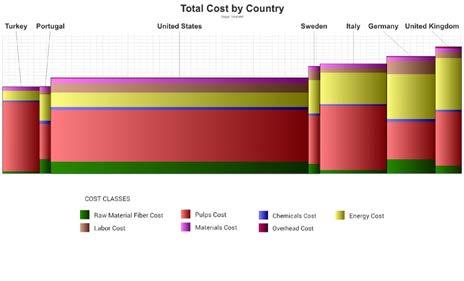
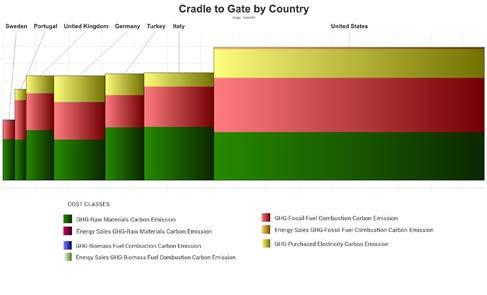
Figure 10 shows the FisherSolve calculated viability for the same competitive set. Viability analysis includes the cost position of Figure 9 plus technical age, capital required, size, and competitiveness. On average, this analysis shows that Turkey is the most viable of the shown countries.
Average tissue business position in carbon emissions is shown in Figure 11. The country ranks in the middle of the pack for most of the European-producing countries selected, with Sweden being the lowest carbon emission producer of this set. The purchased electricity component is missing from Sweden, suggesting the use of renewable energy for electricity production. The United States is always the outlier when included in the analysis. It has enjoyed low energy costs (by global standards) and avoided the market drive to energy efficiency. It also makes the most significant proportion of ultra-soft tissue that requires more drying.
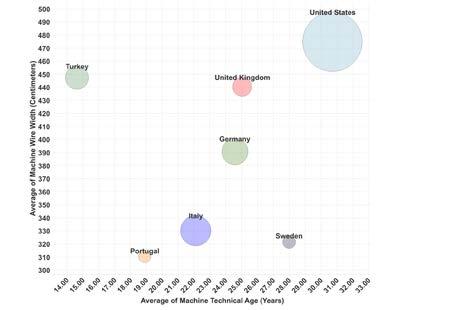
Despite Turkey's currency and inflation problems, the tissue business continues to be poised to survive and thrive. The high cost of imported fibre in local currency seems to be under control and the new tissue capacity provides excellent commercial viability for the future. In addition, disciplined tissue machine replacements have made Turkey competitive without oversupplying the market.
Analysis of competitive position requires specifics on tissue producers and individual machines. This article presents a static picture summary of Turkey's tissue industry today. Fibre prices, exchange rates, and environmental regulations will change, providing some participants with advantages and others with new challenges. Turkish tissue mills will continue to change hands and perhaps consolidate; neighbouring countries may invest in tissuemaking capacity, thus affecting Turkey's imports and exports.

The Turkish retail tissue market, which includes toilet paper, paper towels, paper tableware and facial tissue, has exhibited rapid growth over the last decade, albeit from a relatively low base. Average per household expenditure on retail tissue was recorded at just over USD28 in 2021, which places the country on a similar footing with Brazil and Colombia, though somewhat behind the global average of USD39 for the same year.
While the scale of market development has been nothing short of breathtakingthe retail value more than doubling over just five years (2016-2021) - this is also a symptom of the long-standing inflationary backdrop to the domestic economy in Turkey. In constant terms, growth was more moderate, at a 4% CAGR over the same period. The economic pressures of 2022 will be more closely linked to yet further and more radical spikes in inflation, which are impacting consumer activity far beyond tissue and hygiene. For some companies in the retail tissue space, this means a hit on
profitability and competing against private label, particularly as discounters rise.
The Turkish market for retail tissue has been hit by a “double whammy”, first the significant devaluation of the Turkish lira in 2021, with the costs of importing raw materials, converting and distributing tissue products rising as a result. This was then further impacted by global-wide inflation in 2022. As a result, the country's currency has plummeted, and food and energy costs have skyrocketed, pushing inflation to its highest level in 20 years. Analysts predict that in 2022 the average rate of inflation could be an eye watering 70%. For an economy that imported $1bn of pulp products in 2021 and is dependent on imports to feed its converting and product needs, the effective doubling of this cost from Q2 2021 to Q2 2022, has become an incredible burden for the tissue industry to shoulder.
The government has also made attempts to alleviate costs for consumers. Consumer goods products, such as soap, nappies/


diapers and tissue, have had their prices adjusted in April 2022 to reflect the decrease in VAT from 18% to 8%, particularly as Turkey is increasingly reliant on imports to meet consumer demand. Equally, in February 2022, the value-added tax of 25% on hygienic products, such as adult nappies/diapers and sanitary napkins, was also eliminated.
Looking at tissue products growth decomposition in detail, the medium-term outlook is one dominated by inflation, but the mechanics of the tissue market are of less consequence as the influence inflation is having on spending habits and issues of affordability which is affecting literally every part of the economy.
In response, tissue manufacturers have had to forego some of their profits to maintain competitiveness. In particular, manufacturers of branded products had to give frequent price promotions and discounts on multi-packs to compete with lower prices offered by private label, which holds over 40% value share in retail tissue.
As such, branded retail tissue products will not be as successful in the long run, as was projected in Q3 2021, given the state of the economy. Indeed, the inflationary pressures experienced by the tissue industry are disproportionately influenced by the costs of raw materials, transportation and processing energy. The price of FMCG skyrocketed in 2021 and early 2022 due to the country's high inflation rates, even considering government intervention to reduce the value-added tax on some necessities to limit the rate of price inflation.
In addition to the effect of inflation on retail tissue products, the retail grocery retail sector in Turkey has undergone significant change over the past decade. A combination of the erosion of traditional grocery retailer, as well as the rapid expansion of discounters, such as BIM and A101, have benefited from rapid store expansion strategies. This retail transition has also had the effect of embedding private label with Turkish consumers as a cost-effective and often high-quality alternative to major brands.
In addition, Turkey is no exception when it comes to uptake of e-commerce. After increasing by 40% in 2021 from the previous year, primarily due to the effects of pandemic lockdowns, Turkey's e-commerce sales for retail tissue are expected to increase even further, taking the channel to 7% of total retail tissue value sales that year.
Euromonitor estimates that Turkey’s e-commerce is among one of the fastest growing in Europe for the proportion of FMCG purchased via online channels. It is expected to expand even more due to consumer demand on pricing and availability. According to Euromonitor’s recent 2022 Voice of the Consumer: Lifestyles Survey, the top motivations for buying online for Turkish consumers
LOOKING AT TISSUE PRODUCTS GROWTH DECOMPOSITION IN DETAIL, THE MEDIUM-TERM OUTLOOK IS ONE DOMINATED BY INFLATION, BUT THE MECHANICS OF THE TISSUE MARKET ARE OF LESS CONSEQUENCE AS THE INFLUENCE INFLATION IS HAVING ON SPENDING HABITS AND ISSUES OF AFFORDABILITY WHICH IS AFFECTING LITERALLY
PART OF
ECONOMY.
CR include best pricing (43%) and variety of brands (41%), along with order at any time, from anywhere (38%) and free shipping (33%).
Country Report: Turkey
Taking disposable income and the destination of expenditure in 2021 as a base, because food and drink and transport represent 60% of “normal” spending in Turkey, customers will be driven not only to commoditise their food purchases and, by extension, their purchases in other categories, such as retail and institutional (away-from-home) tissue markets. Inflation affects FMCG by causing consumers to cut back, make do, and even exit some retail sectors.
Due to the pressures now facing Turkish households, they are cutting back everywhere they can, even on necessities, and private label is predicted to benefit from this interest in cost saving at the expense of branded products. As prices have risen, a larger share of the tissue market has shifted to being sold as private label, which now accounts for 47% of the market share value in 2021. This does not, however, mark a huge shift in behaviour, as private label tissue products have been widely used in Turkey for years before the pandemic and largely have a good reputation for quality at reasonable prices.
In 2022, the prices of toilet paper have been drastically reduced by big discounters such as BIM, A101, and SOK, as well as grocery chain Migros.
So how do branded manufacturers compete in such a challenging environment? One of the big success stories over the past decade has been the rise of Hayat Kimya, which is a market leader in Turkey, ranking second in the country’s FMCG industries: hygiene, home care and sanitary tissues.
Part of its success is its investment in local production. In 2019, the firm indicated it would invest TRL450 million in a new sanitary tissue manufacturing facility, bringing its total investment in Turkey over the next five years to TRL2 billion. With an annual production capacity of 70,000 tonnes, the new plant ensures the company's leadership position as Turkey's second largest tissue manufacturer. This will boost the company's total capacity in Turkey to 280,000 tonnes, and its capacity in Mersin to 140,000 tonnes.
The facility will also be used to produce roll paper, toilet paper, paper towels, napkins and tissues for the company's distribution centres and retail outlets. Equally, Hayat Kimya is the most waterefficient tissue paper producer in the country, as well as cuttingedge in research and development for the retail tissue industry. This will allow for product innovation, as well as keeping prices at a competitive level.
Over the next years, the retail tissue industry in Turkey is expected to face significant challenges, particularly given the inflationary forces impacting the economy. Growth opportunities will largely be driven by private label or value for money products, as shoppers trade down, as well as compromise on products, or turn to discounters during inflationary times.
Euromonitor predicts decreasing volumes for products such as kitchen towels and paper tableware, as consumers cut back to only the necessities, even as the country’s population has expanded. As such, brand manufacturers will need to look to local production and promotions to keep their pricing competitive.
Source:
DUE TO THE PRESSURES NOW FACING TURKISH HOUSEHOLDS, THEY ARE CUTTING BACK EVERYWHERE THEY CAN, EVEN ON NECESSITIES, AND PRIVATE LABEL IS PREDICTED TO BENEFIT FROM THIS INTEREST IN COST SAVING AT THE EXPENSE OF BRANDED PRODUCTS. AS PRICES HAVE RISEN, A LARGER SHARE OF THE TISSUE MARKET HAS SHIFTED TO BEING SOLD AS PRIVATE LABEL, WHICH NOW ACCOUNTS FOR 47% OF THE MARKET SHARE VALUE IN 2021.
Essel Cellulose and Paper Industry has made substantial strides forwards since it was founded in 2005, when it commissioned its first tissue machine. Now, a worldwide shortage of raw materials is driving it to innovate for the coming decades. Bülent Can, Converting Manager, Essel Cellulose and Paper Industry, talks to TWM Senior Editor Helen Morris.
IN TERMS OF THE TOTAL TONNES PER YEAR THE BUSINESS NOW PRODUCES, FOR THE FIRST TIME IT HAS REACHED THE 175,000TPY BENCHMARK IN THE TURKISH MARKET: “WE HAVE ALSO INTRODUCED TOILET PAPER PRODUCTS THAT WE PRODUCED WITH THE POINT-POINT EMBOSSING UNIT INTO THE TURKISH MARKET, AND WE ARE WORKING ON CONTINUING TO PROVIDE MORE HOME-TYPE PRODUCT SERVICES TO RESPOND TO CUSTOMER DEMAND.”
Bülent Can, Converting Manager, Essel Cellulose and Paper Industry
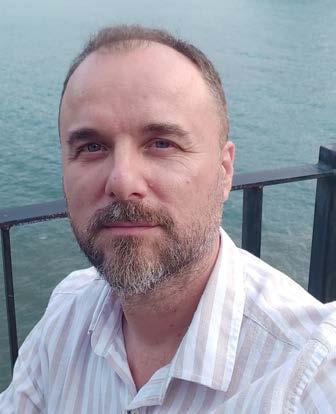

“WE WANT TO CONTINUE TO SERVE THE SECTOR BY ADDING A HIGH-CAPACITY PAPER MACHINE AND CONVERTING PRODUCTION LINES IN FIVE YEARS.”
ue to the worldwide shortage of raw materials and transportation seen in the past few years, the need for the industry to have recycling facilities has really gained in importance,” Bülent Can, Converting Manager, says from his office in Izmit. “That is a key growth area for us as the Essel family. We established our waste paper recycling facility in 2019, and we expect the consumption costs per household to increase. The main reason for this is the rapid increase in paper consumption in all areas with the pandemic, and we have seen this in Turkey as well as in our export markets.”
Essel Cellulose and Paper Industry has made substantial strides forwards since it was founded in Zonguldak Çaycuma in 2005, when it commissioned its first machine, supplied by A.Celli with an capacity of 30,000 tonnes. It now produces jumbo rolls for tissue paper converters with around 600 different types of products including toilet paper, napkin, dispenser napkin, paper towel, dispenser towel and Z napkin in various basis weights working full capacity, and over the last few years has made a series of investments to boost productivity.
In 2015, it commissioned its second machine, this time at a plant in Osmaniye, with an annual capacity of 50,000 tonnes which was supplied by Recard. “And in 2021, we commissioned what was then Turkey’s largest tissue paper machine with an annual capacity of 95,000 tonnes,” Can adds.
Now, the business is present in 60 countries and across five continents with three paper machines and two converting facilities, and an annual capacity of 175,000 tonnes.
“Additionally, we have started to serve the end user by establishing our converting department in 2021,” Can says. “We also commissioned our Dechanghyu machine with a capacity of 3.5 million boxes in 2021 within the body of our converting facilities. Then in 2022, we increased that to a capacity of 12 million boxes. We have also commissioned two Futura-supplied and four Plusline-supplied machines. Finally, we commissioned our Soontrue brand handkerchief and napkin machines that have a capacity of four million boxes per year.”
In terms of the total tonnes per year the business now produces, for the first time it has reached the 175,000tpy benchmark in the Turkish market: “We have also introduced toilet paper products that we produced with the point-point embossing unit into the Turkish market, and we are

working on continuing to provide more home-type product services to respond to customer demand.”
Due to the current economic conditions in Turkey, he adds that the demand for private label products has decreased.
“In general, more economical standard products are preferred in the Turkish market, especially since the start of large changes in the market and economically that we have seen in the past few years.”
With the outbreak of Covid-19, the demand for AfH products has also “decreased significantly”. However, Can says that with the transition to normal life after Covid-19, there “were serious increases in demands” for this market. E-commerce, he adds, has not gained in popularity following the outbreak of the pandemic. “It isn’t popular in the tissue paper market in Turkey and it continues in mostly block markets,” he says.
Due to the worldwide shortage of raw materials, the company has also commissioned coal boilers to reduce energy costs per tonne. “We have established our waste paper plant to reduce the cost of pulp. And since we think that these difficulties will continue, we are considering increasing the capacities of these facilities.”
Over the challenging next few years, he says the company believes that the costs per tonne will increase in the coming years.
“As an important opportunity, paper sales to Europe are increasing exponentially every day, as the costs in Turkey are lower than in Europe.”
“We want to continue to serve the sector by adding a high-capacity paper machine and converting production lines in five years. We continue our R&D studies to produce better quality and more economical products.”
In three years annual capacity rose from 95,000tpy to a projected 130,000tpy with an AHEAD 2.2S tissue line start up in 2023, boosting super-prime branded tissue products sold abroad by Turkish-headquartered Europap Tezol Kağit. Alpay Yalçın, Export Sales and Operations Manager, talks to TWM about setting their sights on export potential.
“Most of the new investments we have made over the past two years are for the export market,” Alpay Yalçın, Europap Tezol Kağit.
THE NEW TISSUE MACHINE WILL BE INSTALLED AT THE COMPANY’S INTEGRATED PRODUCTION BASE IN MERSIN AND WILL USE VIRGIN PULP. START-UP IS SCHEDULED FOR THE FIRST QUARTER OF 2023, AND ONCE UP AND RUNNING IT WILL PRODUCE 40,000TPY. YALÇIN SAYS THAT START-UP HAD BEEN PLANNED FOR AROUND OCTOBER/NOVEMBER 2022, BUT THE ARRIVAL OF SOME PARTS OF THE MILL HAD BEEN DELAYED. “THESE DELAYS IN THE START-UP ARE DUE FIRSTLY TO THE PANDEMIC,” HE SAYS, “BUT ALSO THE CRISIS THAT BROKE OUT DUE TO THE WAR IN EUROPE AFTER THE PANDEMIC. THOSE TWO ISSUES ARE HEAVILY RELATED TO THE CURRENT TRANSPORTATION CRISIS.”

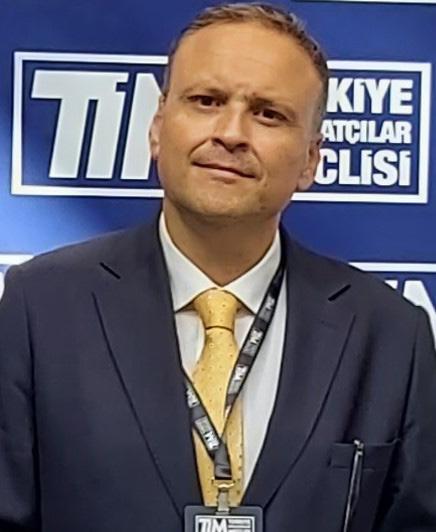
Since we last spoke two years ago for TWM’s 2020 Turkey Country Report, Europap Tezol Kağit has, unsurprisingly, been incredibly busy. The company has navigated the many market and customer changing trends by making a series of investments: an ICM-supplied Multifold Handtowel machine to produce AfH
products started up at the end of 2020, a Korber-supplied Myline with mini-catalyst system complete with a KPL packaging machine was installed in 2021, and Valmet is undertaking a complete hood replacement of the company’s PM2, due to be completed in 2023.
Most significant of all is the new
Toscotec-supplied AHEAD 2.2S tissue machine which is planned for start-up in early 2023, and will be the focus of the company’s new business strategy.
“Most of the new investments we have made over the past two years are for the export market,” Alpay Yalçın, Export Sales and Operations Manager Europap
Efficiency by design


Our new wrapper features a reciprocating design with fast, small-pack production and change-overs.

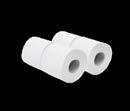
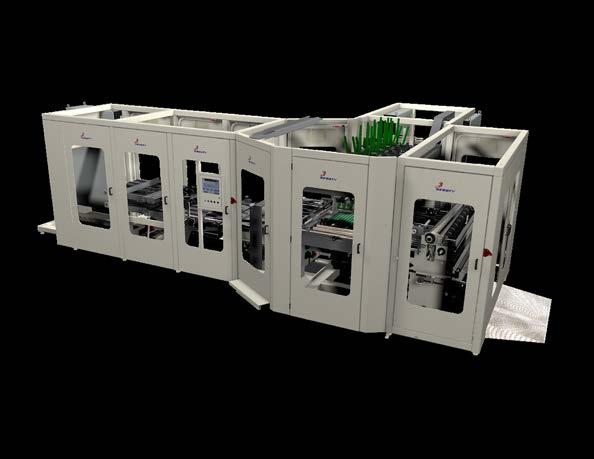

Innovatively designed with shorter mechanical movements and a telescoping unwind, the new Vision G3 wrapper is revolutionizing the industry with faster speeds on small formats, while also being able to produce large packs. Our Infinity engineers re-imagined the G3 from the ground up, setting the global stage with a new standard in tissue packing production.

Every detail has been meticulously designed for increased production, accessibility, maintainability, and fast set-up. Take a virtual tour at visionG3.com


Tezol Kağit, says from his office in Izmir. “There, we are seeing big increases in demand for tissue and towel products. In tissue production, Turkey is in a more advantageous position in sales compared to many countries in the world, especially European countries, except for a few. Our machinery is also mostly brand-new, so quality is more than acceptable across most of the world and from Turkey we can still maintain an advantage in terms of costs. So, we really see a big opportunity.”
The AHEAD 2.2S tissue machine will not only boost production of superpremium branded product, but will also boost the company’s presence across international markets.
When TWM last interviewed Yalçın in October 2020, the company had two Recard-supplied Crescent Former tissue mills at its Torbali-Izmir plant and a total capacity of 60,000tpy. At the company’s Mersin plant, and a Valmet-supplied DCT with a Kadant deinking plant produced 35,000tpy.
Now, annual capacity is currently around 95,000tpy, and the business is planning to increase this to 130,000tpy when its new tissue machine start-up.
The investment decisions have largely been based on the sales slowdown seen in the Turkish tissue markets after the outbreak of Covid-19, which led the business to turn to other markets that needed tissue and towel products. Finding new customers and new territories has opened production potential and the business now works with new customers and has also since started to re-supply its previous local markets - branded products,
E-COMMERCE HAS ALSO SOMEWHAT CHANGED THE MARKETPLACE, BUT HE DOESN’T EXPECT THIS TREND TO CONTINUE WIDELY: “WE DEFINITELY SAW AN INCREASE IN E-COMMERCE IN MANY SECTORS BEFORE THE PANDEMIC, BUT IT PEAKED IN SOME SECTORS WITH THE PANDEMIC. I DON’T THINK IT WILL CREATE ANY DISADVANTAGE IN THE TISSUE (FINISHED PRODUCT) MARKET BECAUSE THE COMPANIES THAT PRODUCE BOTH IN THE AFH MARKET AND THE HOUSEHOLD MARKET HAVE MOSTLY CREATED THEIR INFRASTRUCTURE FOR THIS SITUATION.“
private label and jumbo rolls for the Turkish markets.
The new tissue machine will be installed at the company’s integrated production base in Mersin and will use virgin pulp. Start-up is scheduled for the first quarter of 2023, and once up and running it will produce 40,000tpy. Yalçın says that start-up had been planned for around October/ November 2022, but the arrival of some parts of the mill had been delayed. “These delays in the start-up are due firstly to the pandemic,” he says, “but also the crisis that broke out due to the war in Europe after the pandemic. Those two issues are heavily related to the current transportation crisis.”
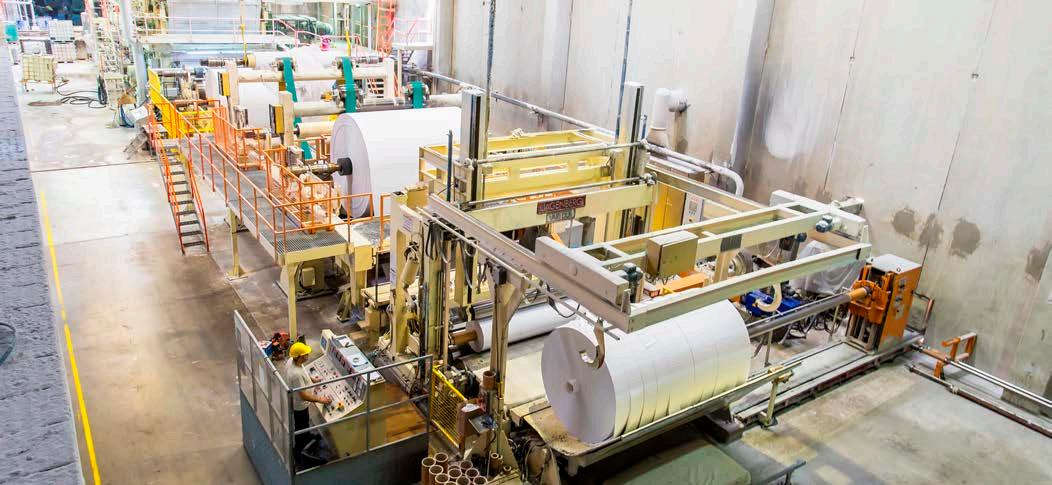
He adds that demand for tissue and towel products has increased in Turkey over the past two years, progressing “on a fixed route”, and because of the investments production has been enough to feed the domestic tissue market. “As a result, most of these new investments are for the export market, which is where we are seeing the biggest increases in demand.”
At the beginning of the pandemic he
adds that there was “an unrealistic excess of demand”, followed by a period of stagnation due to the congestion in the warehouses. “After a while, and after the reopenings, this turned into another demand explosion, and we saw that the demand has returned to its normal levels in the last few quarters. So we think that the balancing process has been completed.”
In addition to its own brands in finishedproducts, he adds that private label production now “maintains its key sector position” in company strategy. “In addition, we aim to increase our share in the AfH market with the new investments made and planned,” he adds.
And while it was true that there was “a natural recession” in AfH products due to the closure of all facilities, Yalçın adds that this demand rebounded linearly with the openings. “This linear rise still continues to grow,” he says.
E-commerce has also somewhat changed the marketplace, but he doesn’t expect this trend to continue widely: “We definitely saw an increase in e-commerce in many
sectors before the pandemic, but it peaked in some sectors with the pandemic. I don’t think it will create any disadvantage in the tissue (finished product) market because the companies that produce both in the AfH market and the household market have mostly created their infrastructure for this situation. Marketing departments and sales channels had created – and still are creating - strategies according to this new situation and position themselves accordingly. In the semi-finished jumbo roll market, I personally do not foresee that e-commerce will be very effective due to the diversity of product features and the fact that it is an area where production is more according to order.”
The main opportunity is export, something brought on by events in the region and the aftermath of the pandemic: “Turkey is growing mostly in the export market by using the advantages of its location. In the domestic market, the 2023
Turkish general election will be held in June and therefore we expect the current growth rate to be maintained even if there is no increase in CAGR. But the same is not true for the European market. It is likely that production will decrease in many areas, including tissue production, due to increasing energy prices and supply shortages, and the growth rate may decrease as a result. Therefore, it is possible to foresee that the key growth opportunities in our sector will remain mostly in the export market.”
The biggest challenge for the Turkish tissue paper industry in the coming years is overcapacity, he adds, “as it produces more than it normally consumes”. “We can also see this situation as an opportunity because we are still more advantageous than Europe and the USA
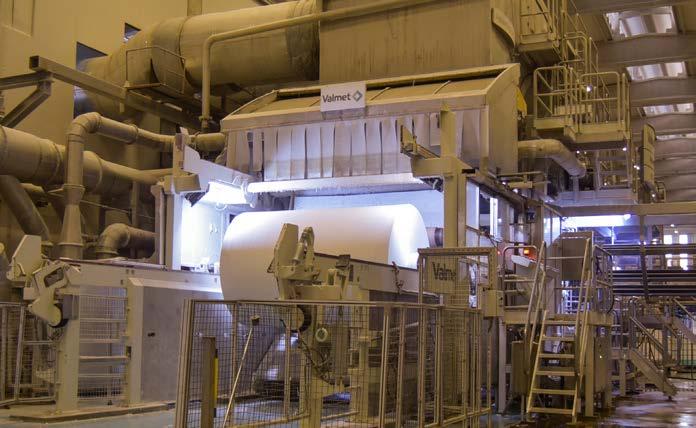

in some parameters in production. If the manufacturers make good use of this situation, their share in the world market and the perception of quality will be permanent.”
However, he cautions that this can be possible only if the competition is not made just in the field of price, that business development is not brought to the point of only giving better prices than all companies, and that the right techniques are used to settle a regular customer satisfaction and service quality.
Raw materials also remain a key concern: “As a result of the anomalies experienced in the world since the beginning of 2020, some raw material prices have been faced with the danger of overpricing due to excessive demand or underproduction. Some governments and financial resources could not manage these situations well and unfortunately this also facilitated the growth of these problems. This abnormal
situation still continues and as long as it continues, uncertainties will remain.”
Lastly, he summarises that the last few years has seen the world having to deal with the Russia-Ukraine war, and the energy and food crisis it brings. “In addition, the crisis due to high pricing in shipping and port strikes in some countries continues. Those who run macroeconomics could not foresee many of these situations, and many of the necessary measures were late.”
There is also, he says, the concern of whether a pandemic related to Covid-19 will repeat as populations enter the winter: “The ‘inflation, energy price hikes, pulp price hikes’ we have been discussing here are all directly caused by the results of this situation. Of course, we must reflect the cost increases brought about by these situations to a certain extent. However, while doing this we must work by taking market dynamics and people’s purchasing power to the forefront.”
ith our latest tissue machine investment - a 5.6m-wide Advantage DCT 200 tissue line planned to start-up at our Pamukova, Sakarya Province plant at the end of 2022 - Aktül Kagıt will increase its paper production capacity by 50%,” Factory Director Ziya Karadeniz says during our interview for the Turkey Country Report. “Currently our paper production capacity is 140,000tpy, following the TM start-up this will increase to 210,000 tpy and converting is 120,000tpy and will increase to 160,000tpy with new investment.
“And while previously we could not allocate enough share for export because of limited capacity, our plans are now to increase our export share with the new investment.”
The business isn’t stopping there; 2022 will also see the installation of converting lines at the company’s mill in Pamukova, Sakarya Province, as well as a new consumer rewinder and a new AfH product line which will be commissioned at Pamukov.”
“We have been working continuously to improve our production and operations
with cutting-edge technology,” he says. The scope of supply of the Valmet-supplied tissue machine includes a complete tissue production line including a stock preparation system and an Advantage DCT 200TS tissue machine equipped with an OptiFlo II TIS headbox, an Advantage ViscoNip press combined with Advantage ReDry, and a cast alloy Yankee cylinder.
Using virgin fibre, the line will add 70,000tpy of high-quality facial, handkerchief, toilet and towel grades to current production.
The company has also built a new converting facility in the Mersin Tarsus Industrial Zone which was founded on 380 hectares in 1993, and which occupies a crucial area for international trade: East, West, South, North axis Asia-Europe, or the Africa-EuropeAsia line, meaning the area is one of Turkeys’ most important gateways to business.

“The Mersin Tarsus Industrial Zone is a strategic position for us in terms of transport, so it was vital we build the new converting facility there,” he says. The converting facility is expected to be up and
running in 2022 and a consumer line will also be commissioned at Tarsus. With these new investments the company’s converting capacity will be 160,000tpy.
Established in 2011, Aktül Kağıt started to produce tissue paper from 100% virgin wood pulp using ViscoNIP Technology, and says it was the first company in the Turkish tissue paper industry to use such technology. It produces private label products for local chains, markets and abroad, as well as jumbo rolls for local and international converting facilities. Valmet has previously supplied two Advantage DCT 200TS tissue lines that started up in 2011 and 2016 in Pamukova.
The business also has a cogeneration plant which Karadeniz says “is the most advanced within existing two systems in the tissue paper industry in Turkey.” “It is also among the top five cogeneration systems in the tissue world,” he says. The cogeneration plant produces its own electrical power with natural gas through using gas turbine.
For the future, Aktül’s key sector will
continue to be private label products: “Currently 50% of our total production is private label and 20% is AfH,” he says. “The Turkish tissue market is moving more and more into private label, we are seeing a steady and substantial demand for these products locally.”
With average per household expenditure on retail tissue recorded at just over $28 in 2021, Karadeniz adds that the tissue market is expected to continue to grow in Turkey: “Market reports show that while the growth in toilet paper continues in the market, paper towels also continue to be stable. Yet it is private label products that are significantly increasing their share in the growing market.”
He adds that with the growth of the tissue paper market following the outbreak of Covid-19, the market “has regressed top re-pandemic levels with price increases in 2022.” “Private label products have increased their share in the total market. In a period of high price increase, households are repeatedly preferring to market brand products in every category,” he says.
In AfH, although demand in Turkey and abroad decreased with the pandemic, he says that as of 2022 it has increase again “to 2019 levels” as regions return to normal life. “Although the usage had decreased, demand has returned to old levels with effect of summer tourism and we expect more significant growth in coming years,” he says.
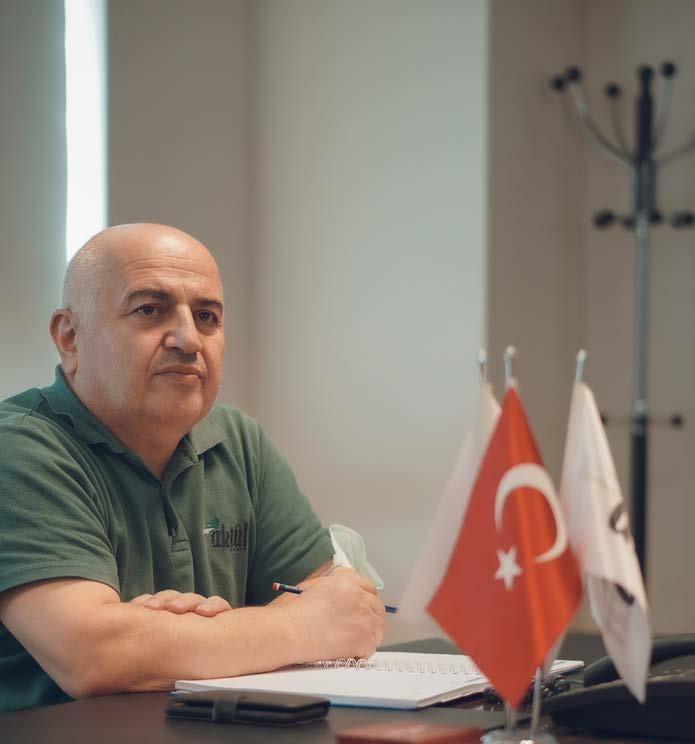
E-commerce has also made “notable share gains” in 2020 to 2022 as consumers took advantage of the convenience offered by home delivery. Additionally, Karadeniz says that due to the competitive prices that this channel offers, particularly on multipack or bulk purchases, this growth was “less in the tissue paper market compared to other consumer products. The tissue paper market is expected to grow further in e-commerce,” he adds.
In terms of key challenges, Karadeniz sites the increase in energy prices which he says has become “one of the most challenging parameters for tissue paper producers,” even more so than recent pulp price hikes and inflation. “In order to deal with all these negativities, we are trying to increase efficiency by renewing the technology, making the necessary revisions… But the biggest challenge for the paper industry is the increase in energy cost, even more so that the increase in pulp prices and availability of raw materials.”
“Our response to this is to continue advancing with our new investments in Turkey, and we will continue to increase our share in exports following our investments.”

“IN ORDER TO DEAL WITH ALL THESE NEGATIVITIES, WE ARE TRYING TO INCREASE EFFICIENCY BY RENEWING THE TECHNOLOGY, MAKING THE NECESSARY REVISIONS… BUT THE BIGGEST CHALLENGE FOR THE PAPER INDUSTRY IS THE INCREASE IN ENERGY COST, EVEN MORE SO THAT THE INCREASE IN PULP PRICES AND AVAILABILITY OF RAW MATERIALS.”Increases in energy prices have become “one of the most challenging parameters for tissue paper producers,” Factory Director, Ziya Karadeniz

New bride Tabitha Perry O'Sullivan, an Investor Relations and Communications Manager living in London, recently celebrated her hen do by tasking her hens to create a wedding dress made from toilet paper. Here, she discusses how the fun led to a new appreciation of tissue


recently celebrated my hen do, and my sister, who was also the Maid of Honour, organised a very innovate game in addition to the day’s general frivolities.
We had the task of creating a wedding dress that was to be worn on a real-life model and made only from loo roll! It was great fun. Three wedding dresses were created, and all were in very different styles. Nothing but loo roll was allowed to be used, apart from a few flowers taken from the garden to add a finishing touch. A maximum of four toilet rolls could be used per bride.
It was also very important for me that we made the game as sustainable as possible and that there was no wastage. We used a sustainable loo roll to start with and this idea was driven by my cousin and grandmother who are always showing us all how to be more sustainable. And at the end of the game, all the toilet paper was neatly folded and put in a basket by the door as the going home present so everyone could re-use it.
It was important for me and all of the guests that we did this. We would not have played the game if we could not recycle
IT WAS IMPORTANT FOR ME THAT WE THERE WAS NO WASTAGE. WE USED A SUSTAINABLE LOO ROLL TO START WITH AND THIS IDEA WAS DRIVEN BY MY COUSIN AND GRANDMOTHER WHO ARE ALWAYS SHOWING US ALL HOW TO BE MORE SUSTAINABLE.
the loo roll due to the waste it would have created. The game also made me realise that there are so many uses for loo roll that I had never seen or thought of before! It really has so many uses. One guest took it home to help clean up after their puppy whilst they are potty training!
Generally, at home and when I’m out and about or travelling, I am always willing to pay a premium for environmentally sustainable products, and I actively try and seek them out. We all need to contribute to preserving the planet as best we can, and this is a relatively easy way for us to do this. Sustainability also takes precedence for me over the type of toilet paper or towel product I’m buying. I am indifferent about the label or whether it is a brand or not,
just as long as it’s of good quality and is environmentally sustainable.
Since the Covid-19 outbreak, I try to bulk buy (but not stockpile) toilet paper and towel products to reduce the number of trips to the supermarket and to also reduce the need for last minute ordering from Amazon! And I will always look out for items on offer and that are more sustainable.
Covid-19 – and also my newfound knowledge of the uses of toilet paper from my hen do day – mean that generally I am also more careful with the amount of toilet paper and kitchen towel I use. I now try to make it last longer. If napkins or kitchen paper are not used, I now take advantage of how multi-functioning they are and keep them to re-use for cleaning to reduce waste.
Above:

Unbleached Miscanthus cellulose fibres combined with recycled office and hand towel paper, and unbleached fibres from recycled cardboard. Dr. Stefan Gräter, Head of Sustainability of the WEPA Group, talks to TWM.
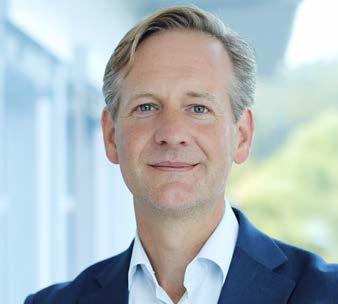
sustainable fresh fibres in the world” now serves as a raw material: miscanthus.
It claimed that miscanthus has not yet been used by any other manufacturer to produce hygiene paper. Here, Dr. Stefan Gräter, Head of Sustainability of the WEPA Group, discusses the R&D behind the innovations.
TWM/1: WEPA Group has recently launched its “mach m!t PURE” product through its Consumer Business Unit, while WEPA’s Professional Business Unit will launch “Satino by WEPA PureSoft” and “BlackSatino GreenGrow”. What is unique about these products?
towel paper. What all the products have in common: outstanding sustainability and quality characteristics. They are all made without fibre bleaching and are premium-soft thanks to innovative production processes.”
TWM/2: What was the reason for launching these products?
The WEPA Group has introduced two additional raw material innovations as part of its sustainability strategy. The company said it has made fibres from recycled cardboard which form the basis for “extra soft and sustainable hygiene paper products”.
Secondly, it said that “one of the most
“The three products are made from innovative and sustainable raw materials: “mach m!t PURE” and “Satino by WEPA PureSoft” are mainly made from recycled cardboard. The production of “BlackSatino GreenGrow” hygiene paper builds on Miscanthus cellulose fibres which are combined with recycled office and hand
“Sustainability plays an essential role at WEPA. We are the European market leader in the production of hygiene paper made from recycled fibres and we carefully select our raw materials from a sustainability perspective. After all, the raw materials we use to produce our hygiene papers have a major impact on the ecological footprint. By 2030, we strive to increase the share of recycled fibres and alternative fresh fibres in the raw material mix to 60%, thus reducing the ecological footprint of the fibres used by 25%. Therefore, we did a lot of research in the field of additional sustainable raw material sources and we are very pleased to be able to offer
This calls for an ingenious solution. INGENIA.
INGENIA makes it possible to produce premium quality structured tissue paper with substantially higher quality than textured tissue and close to Through Air Drying (TAD) produced paper, but using 35% less energy.
INGENIA is the answer to your company’s needs and the expression of Toscotec’s vision that combines superior efficiency with concrete sustainability.
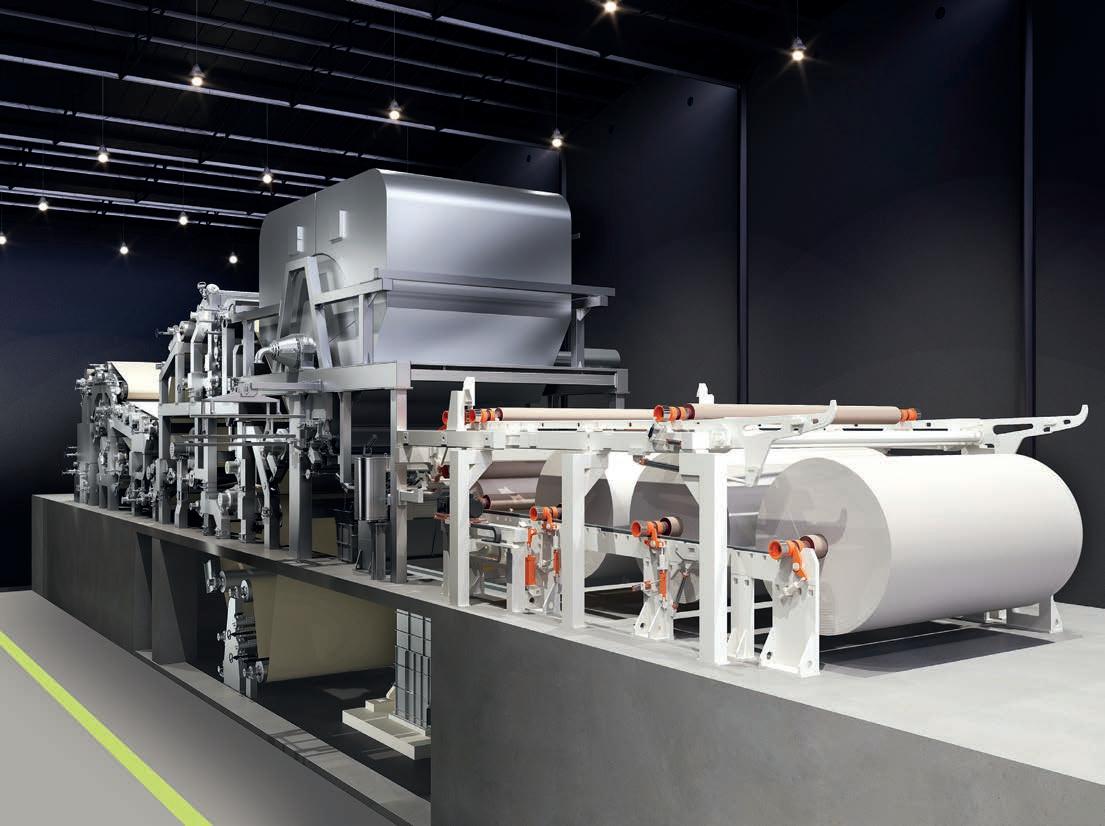
innovative products made from recycled cardboard and Miscanthus now.”
TWM/3: Will you look to produce them as private label products also, or will they always be branded?
“The new products are launched in our WEPA brands “mach m!t”, “Satino by WEPA” and “BlackSatino”. However, the use of recycled cardboard as raw material is also being considered for private label products with exclusive customers.”
TWM/4: How are “mach m!t PURE” and “Satino by WEPA PureSoft” produced?
“Mach m!t PURE” and “Satino by WEPA PureSoft” are made from 100% recycling fibres mainly consisting of recycled cardboard. To be able to use this fibre source as a raw material for the production of hygiene paper, WEPA has further developed the production process. The diligent selection of fibre sources and an innovative production technology makes the products extra soft. Since no fibre bleaching is used, the light brownish colour gives the paper a natural appearance, additionally emphasising the sustainability aspect.”

TWM/5: And how is “BlackSatino GreenGrow” produced?
“The special ecological performance of “BlackSatino GreenGrow” hygiene paper builds on unbleached Miscanthus cellulose fibres which are combined with recycled office and hand towel paper. Miscanthus has not yet been used by any other manufacturer for the production of hygiene paper.
“WEPA has developed a unique dissolving process to gain the fibres from locally planted Miscanthus sources.”
TWM/6: How sustainable are these products and why?
“Mach m!t PURE”, “Satino by WEPA PureSoft” and “BlackSatino GreenGrow” are highly sustainable products because we do not bleach those products and, of course, due to the raw materials used; WEPA has high expertise and is pioneering innovations in the area of recycled fibres for years.
“By using recycled fibres that have already gone through several life cycles in other products, our products consistently take up the idea of the circular economy. It is good to reuse those fibres especially for disposable products such as toilet paper. In order to assess a product in terms of

its ecological footprint, it is important to consider the entire value chain - a look at the energy used to produce the fibre shows that on average, the recycling of fibres from recovered paper is 50% more energy efficient than the production of woodbased fresh fibres.
“On the other hand, with Miscanthus we can now use one of the most sustainable fresh fibres for our products. Miscanthus is a renewable, natural raw material rich in cellulose which grows under very mild conditions. Moreover, the plants grow locally without the need for fertilisation, irrigation or the use of pesticides. They reach their mature size every year with a lifespan of about 20 years. Except for the annual harvest, the soil is not disturbed all year round and the soil structure improves over the years. The plant's demands on the soil are very low since it has its own internal nutrient cycle which does not deplete the soil. Due to the very high yield
per hectare area, Miscanthus has a relatively small ecological footprint compared to standard wood-based fresh fibres, when it is cultivated on existing fields.”
TWM/7: How vital is it that the tissue and towel industry continue to innovate with products such as these?
“From our perspective, sustainable innovation is crucial for the tissue industry. On the one hand, sustainable raw materials, products and production processes. But on the other hand, also sustainable and innovative service concepts such as the towel paper circulation concept we offer to organisations and companies in the Netherlands and Germany. Since 2018, we were able to recover and reuse paper towels with this innovative concept. The aim of innovations must be, to reduce the consumption of fibres as much as possible, and to keep precious renewable resources in recycling loops as long as possible.”
Is there any reason to have a market price difference between Pinus radiata and the famous duo, Pinus taeda (loblolly pine) and Pinus elliotti (slash pine), planted in Brazil? If we consider the homogenous Klabin’s pine plantation, the tree breeding, the skills of Brazilian forest technicians, soil, climate/ weather, environment concerns/actions, fibre morphology, etc; there is a list of characteristics that requires a different view on this market bias.

Klabin has the largest softwood market fluff production in the southern hemisphere since the start-up of the Puma project in 2016. A dedicated line with 470,000mt capacity, located in Ortigueira, Paraná State, Brazil, it has had the responsibility of becoming Brazil’s selfsufficient long fibre consumer producer as well as a traditional exporter of softwood in reels and bales. The 123-years of company history, associated close to 70 years of working with loblolly and slash pines to manufacture different papers such as kraftliner, sacks, liquid packaging board, among others, has enable Klabin to be present in the softwood market pulp with strong and outstanding skills on all forest, production and product application chains.
This article shows how tree breeding, industrial technology, customer tailormade products, as well as R&D innovation and sustainability guidelines have been playing an important role as Klabin qualifies its long-fibre pulp grade for tissue paper, and also for covering specialties and the absorbent segments.

In 2020, the planted trees sector in Brazil had a total area of 9.55m hectares. The eucalyptus and pine species are 78% and 18% of the total planted area, respectively (IBÁ, 2022). Klabin imported the first pine seedlings from the US southern coast by the middle of the last century, focusing on newsprint production and later added sack kraft paper, packaging and many other kinds of papers and board.
The mild climate in the southern region
(Paraná and Santa Catarina states) provides better development and adaptation, leading to the shortest cutting cycle in the world, approximately 15 years versus 25 years for the United States and Chile, for example. Among the most planted species of Pinus, in Brazil Pinus Taeda is the one that stands out, cultivated mainly in the southern region, which provides better development and adaptation. Other species of Pinus, such as Pinus Elliotti and tropical ones, have gained space and importance, representing a possibility of increasing the planted area with pine in the national territory.
1. Today’s planted pine in Klabin, and the future
Based on the edge of the recent tree breeding developments, Klabin has been improving the forest productivity of its lands as well as sharing this knowledge with farmers in a partnership process.
Pine plantations at Klabin started in the
1960’s with imported seeds. After that, a genetic improvement programme was initiated, installing trials of pine species and provenances. Nowadays the commercial forests are planted with the best families from the second and third cycle of orchards. To accelerate the operational deployment of new genetic materials, the best families are propagated in the nursery by rooted cuttings (cloning). The species planted are Pinus Taeda, Pinus Maximinoi and Pinus Caribaea var. Hondurensis, and other species and hybrids are being developed for the future plantations.
Klabin has also been studying different pine species such as the Pinus maximinoi for kraft fluff pulp production, due to unexplored studies and innovations related to fluff pulps and its relevant gains in final products as the performance in absorbent pads.
Grown in Mexico to Nicaragua, Pinus Maximinoi is classified as the second most common Pinus species that occurs in Central America and has been considered as an alternative raw material by pulp industry in tropical and subtropical regions, mainly for presenting tree volume production and yields higher than other pine species commonly used in this field. These species have shown an interesting potential for pulp mills since they develop reasonably well in other regions and maintain a good quality of the kraft cellulose pulp generated (Klock, 2004; Anoop et al., 2014; Baptista, 2019; Coelho et al., 2021).
When compared to P. Taeda, the pulp fibres from P. Maximinoi showed better results regarding morphology through larger fibre length 8%, width 9% and wall thickness 25% resulting in a coarseness 23% higher, parameters considered important for the wicking. P.Maximinoi also presented lower cut tendency in the Hammermill, contributing to better process yields in the customer’s facilities. However, due to higher coarseness, the number of fibres per milligram were reduced by 25%, which can contribute to higher empty volumes between fibres, leading to greater liquid flow inside the pads. Other properties such as burst strength and shredding energy consumption usually correlated, showed significant reductions of 17% and 24% respectively. Altogether, this study showed the feasibility of exploring new wood species for fluff pulp, especially Pinus Maximinoi, as a raw material that through its properties may contribute to the final
KLABIN HAS ALSO BEEN STUDYING DIFFERENT PINE SPECIES SUCH AS THE PINUS MAXIMINOI FOR KRAFT FLUFF PULP PRODUCTION, DUE TO UNEXPLORED STUDIES AND INNOVATIONS RELATED TO FLUFF PULPS AND ITS RELEVANT GAINS IN FINAL PRODUCTS AS THE PERFORMANCE IN ABSORBENT PADS.
product’s performances.
2. The Puma mill – a market pulp view
Klabin re-entered the market pulp segment in 2016 with the Puma project, composed by two separated pulp lines: 1.10m mt of eucalyptus and 0.45m mt of pine. The site now produces more than 1.6m mt and its products cover the demands of tissue papers, printing and writing, specialties (decor paper, cigarette paper, etc), packaging, nonwoven, pharmaceutical, feminine pads, diapers among other segments.
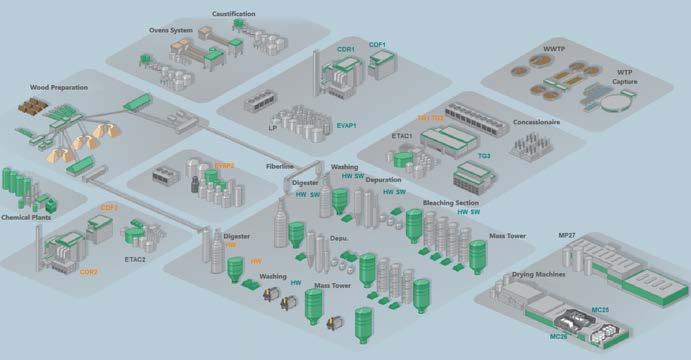
The PineCel softwood market pulp has been used mainly in tissue, coffee filter and coated (glassine/release) and packaging
papers. Regarding the strength profile, it keeps a higher tear than the Pinus radiata in the beginning of refining and a continuous tensile index enhance. The number and size of porous in the coffee filter is also an important competitive advantage.

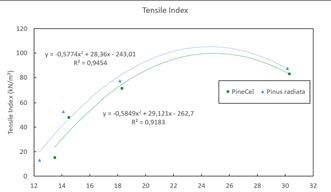
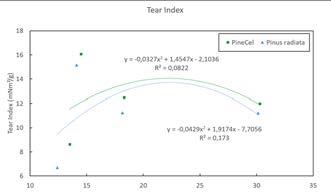
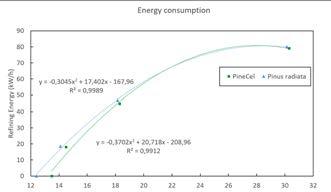
Focusing on Klabin’s diversification, the unique characteristics of the Pinus Taeda growing in Southern Brazil allow Klabin to develop a fluff pulp that could replace all the main international producers in a very short period of qualification, assuming different categories of products (feminine pads, diapers, air laid, etc), equipment manufacturers (Fameccanica, Zuiko, JOA, GD,
etc) and SAP (Super Absorbent Polymer) additive proportion.
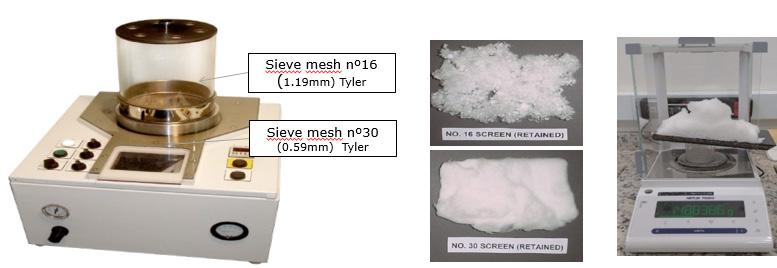
The PineFluff, current Klabin’s kraft fluff pulp brand name, is a result of the technology of formation, pressing and drying machine sections (Valmet and Klabin’s engineering and technical expertise) in a greenfield fluff concept project. Cooking and bleaching steps give the process stability to produce a homogeneous product with a potential higher-than-average brightness, thickness and dryness stability profile, as well as with a rewinding area ready to produce reels with different width and diameter.
Klabin has invested more than $19m in facilities and equipment that promote technical conditions to create many potential products, such as: treated fluff pulps, blend of fibres, odour control, TCF bleaching, tissue and fibre cement grade, talc free, among other pulp specialties.
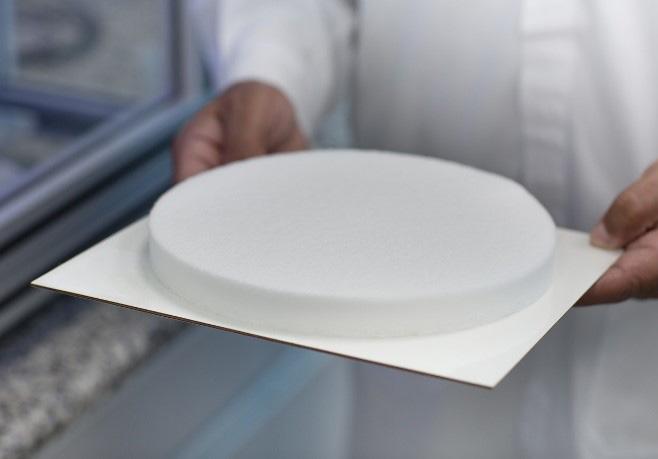

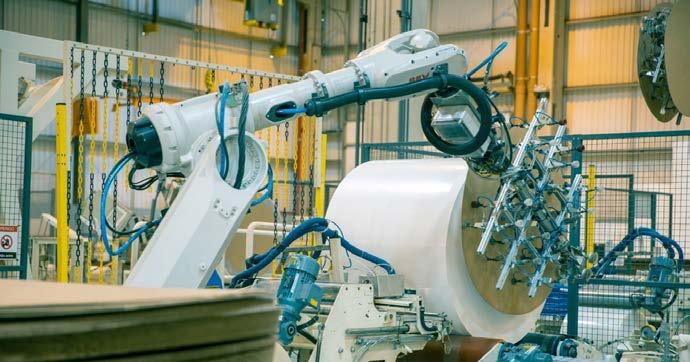
How much is mechanical refining costing you in time, added pulp expense and energy use? Turn to Maximyze® for tissue. It uses enzymatic technology to condition fibers without harming them.

So you can maximize strength, save on pulp and energy costs and speed up production. Connect with your Buckman representative or visit buckman.com to learn more.

You might as well feed it your money.
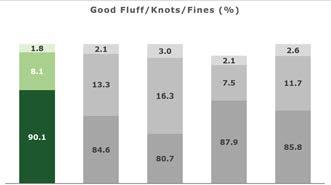
The untreated PineFluff is a result of a long study covering a deep benchmarking project that takes into consideration fluff products offered by North American producers, mainly and specific demands coming from potential buyers at the absorbent global producers such as Kimberly-Clark, Unicharm, Essity, Drylock, Ontex, Procter & Gamble, Fitesa, Johnson & Johnson, etc.
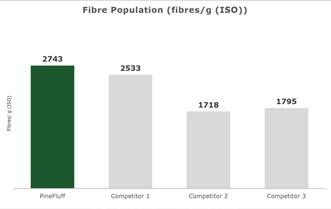
Investment in the visual characteristics of width, diameter and wrapping were made, different from the paper grade, which requires a standard dimension and received a disintegration in a hydrapulper instead of a dry defibreising at hammermill that demands a deep control of moisture and thickness of the pulp reel.
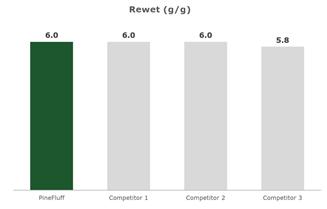
Klabin is committed to market pulp diversity and differentiation. The focus on tissue is mainly dedicated in the eucalyptus pulp (LyptusCel), working on global demands, which includes the talc removal, circularity mega trend, investment on delignification and a very clean and homogeneous product.
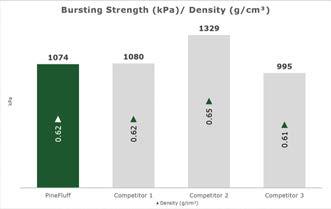

The softwood pulp (PineCel) takes advantage of this technical approach and has been used not only in the sanitary, towel and other tissue application, but also a range of applications such as packaging, printing and writing and specialties (release, coffee and automobile paper, etc).
In terms of the absorbent segment, untreated PineFluff is considered a standard product which fulfills this niche, but increasingly this grade is also being used in the airlaid/nonwoven market (acquisition layer, diaper top sheet, etc), while the fully treated grades are a reality in the baby wipes too. Nowadays, considering the LyptusCel talc free pulp and the PineFluff treated, Klabin’s specialties are more than 10% out of 1.6m tonnes.
There is plenty of room to offer new products to all markets, from the paper to the absorbent. The next steps in R&D should include an odour control pulp, mainly to the absorbent products, and a tissue pulp grade (eucalyptus) with additional strength improvement.
There is also potential to offer a specific market pulp with a fibre mix (pine and eucalyptus) pattern/benefits to the tissue
THERE IS PLENTY OF ROOM TO OFFER NEW PRODUCTS TO ALL MARKETS, FROM THE PAPER TO THE ABSORBENT. THE NEXT STEPS IN R&D SHOULD INCLUDE AN ODOUR CONTROL PULP, MAINLY TO THE ABSORBENT PRODUCTS, AND A TISSUE PULP GRADE (EUCALYPTUS) WITH ADDITIONAL STRENGTH IMPROVEMENT.
market. It could require a partnership with paper producers aiming to identify the impacts on refining disc design (long and short fibre altogether in different proportions) and tissue paper quality formation demand.
This article was written for TWM by Marco Martins, MSc Science Forest and Chemical Engineering – Klabin’s Customer Technical Services Manager, Flaviana Milagres –Forest Engineer, Master and Doctor in Forest Science - Klabin’s Research and Development, Vitor Batistela – Chemical Engineer – Klabin’s Customer Technical Services Engineer. All the lab test were performed at Klabin’s Technology Centre.
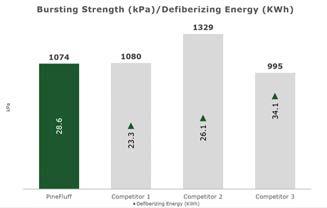
The pandemic fundamentally changed consumers’ tissue use habits and manufacturers’ tissue production strategies. TWM spoke to Asia Pulp & Paper (APP) supply partners Sorbent Paper Company and Solaris Paper in Australia and Cottonsoft in New Zealand to assess the immediate and longer-term prospects.

market showed volume growth of 2-3%, although the pandemic has impacted that significantly. 2020 saw a decline of -5%, as Australia went into rolling lockdowns with working and schooling from home and a residual fear of getting out.
“Toilet paper volume switched from AfH to retail while facial tissues reduced significantly due to a significant reduction in cold and flu incidences with social distancing and mask mandates (2020 saw -15% volume growth for facial tissues in AfH). 2021 regained some ground, 0% growth, as people started returning to AfH venues, including schools and tourism. Euromonitor’s prediction is for a rebound to 4% growth in AfH.
The pandemic made tissue demand highly irregular, driven by panic buying: “But panic buying sales tended to be balanced by subsequent dips in sales, so sales volume is only elevated by shoppers purchasing products that were not their normal out-of-urgent buying,” he adds.
And Covid may lead to a residing impact of more workplace flexibility, meaning many people may never return to the office full time, favouring instead to work from home.
Steve Nicholson Acting Chief Executive, Sorbent, Solaris & Cottonsoft, New Zealand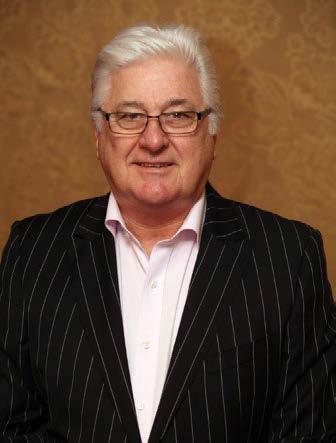
Predictions for 2022 and the following few years suggest that Australia and New Zealand (ANZ), as in many other countries, will see a rebound in the pandemic hit sector AfH… in this case 4%.
Again, as in so many other countries, the pandemic improved consumers’ personal hygiene habits, delivering a further increase in household penetration in tissues and towel categories, in this case with the extra levels of hygiene and the single use paper towels and wipes being key drivers.
Steve Nicholson is Director, acting Chief Executive, Sorbent, Solaris & Cottonsoft New Zealand, a supply partner of Asia Pulp & Paper (APP) in ANZ. On this page he outlines the companies’ operations, products, and market strategies.
Nicholson refers to the recently released report by Euromonitor: “The AfH tissue
“In the retail market, we saw significant growth across the toilet, tissue and towel categories as Covid hit the country. However, in the last couple of years, suppliers have struggled to meet consistently high demand, impacting total sales in the market across all categories.”
He adds: “In the past, we used to ‘soldier on’ when we had a sniffle, but with the pandemic, people will now be expected to work from home when they are unwell with an increased fear of spreading germs. Given toilet paper does not have expandable consumption in the region, this will potentially mean a rebound in the AfH market for toilet paper and an increase in retail sales.”
As the effects of the pandemic ease, so a raft of new challenges emerged, the
potential seriousness of which are yet to work through the global business and financial markets… rising inflation, energy price surges, and pulp price increases.
“Energy costs,” he says, “are a real concern, as the new government tries to balance a transition to renewable energy sources for the future. However, Australian manufacturers are now becoming very concerned with their ability to hold pricing in the face of such significant increases in the cost of current energy supplies.”
Within retail space, private label has played an important role within paper categories driving traffic and offering quality products at great value: “However, the significant increase in costs over the past 12-18 months is making it very difficult to still manufacture at the same quality and price, which causes supply interruptions.
“Similarly, in AfH the global supply crisis has driven a decline in the private label segment as imported finished goods become uncompetitive for small independent importers.
"Products made within ANZ have become more competitive with higher cost of shipping and supply disruptions meaning more certainty and flexibility from locally produced products. This might change as shipping costs come down.”
E-commerce of tissue products increased dramatically, and helped to sustain purchasing volumes during lockdown.
Important for the market in the next few years is the need to balance demand and capacity: “The opportunity for the AfH market is to right-size after three years of home isolation and global supply challenges. The pandemic will leave some new habits, including better surface and hand hygiene consciousness, with a preference for single use hand towel replacing air dryers with concerns of blowing germs and rising energy costs.
“Unfortunately, with the movement of people back to AfH spaces and the reduction of social distancing and mask wearing, we will see an increase in colds and flu so the demand for AfH facial tissues should rebound.
“To encourage people back into workplaces, there will be an increased emphasis on the little touches like home, and we expect to see an increase in demand for quality toilet paper and facial tissues with increased emphasis about hygiene.”
Sustainability has been to some extend side-lined during the peak pandemic years, but Nicholson sees a return in prospect:
Above: Important for the market in the next few years is the need to balance demand and capacity
“With supply chain concerns creating out of stocks, and other hangovers from the pandemic, customers and consumers alike have not been so focused on sustainability aspects. However, this may return once the market has rightsized in the coming months.
“Consumers in ANZ are increasingly conscious about sustainability and the environment, including how what they buy or consume can impact our planet. They are therefore more willing to speak up, ask questions and vote with their wallets.
“What this means is that for our business to thrive, we must provide customers
and consumers a high degree of comfort that our products are made sustainably, with legally sourced virgin fibre, from well-run plantations all the way through to the finished goods from responsibly managed mills.
“In terms of driving sustainability across our products and production, the company is already embarking on this journey with our partners to pilot verifiable carbon neutral products for some of our brands in New Zealand. This would enable us to test various models with the goal of rolling out carbon neutral paper products across both markets soon.”
Asia Pulp & Paper (APP) has a presence across Australia and New Zealand (ANZ) as supply partner of Australia’s Sorbent Paper Company and Solaris Paper and New Zealand’s Cottonsoft. This includes manufacturing sites located in New Zealand, in Dunedin on the South Island, and two sites in Auckland on the North Island, as well as two sites in Australia located in Sydney and Melbourne. Converting occurs in all five sites using a combination of imported jumbo reels and locally made tissue.
ANZ manufacturing mainly produces for the retail markets, both branded and private label, across kitchen towel, toilet, and facial tissue. For the AfH ANZ market, finished goods are imported from mills located close to APP’s plantations in Indonesia. Being vertically integrated from sapling to finished goods is one of the unique aspects of APP that differentiates it from other tissue suppliers in ANZ which buy their pulp on the open market.
Both Cottonsoft NZ and Sorbent Paper Company Australia hold market leadership in several product categories. Recently some major tissue companies have exited the New Zealand market, and this has strengthened Cottonsoft’s market share particularly in the retail sector where its brands like Paseo, Cottonsoft’s and Tuffy hold strong market share and Livi in the AfH market.

In Australia, the Sorbent Paper Company has dominance with its iconic Aussie toilet paper brand Sorbent, while Handee Ultra is Australia’s number one kitchen towel.
Solaris Paper is focused on the AfH market in Australia with its well-established global brand Livi. It has recently launched a premium brand, Sorbent Professional, with a range including wrapped toilet rolls, jumbo toilet rolls, hand towel and facial tissues with matching dispensers.
The Sorbent Professional hand towel range has received the official Australian-Made logo and uses the more absorbent TAD paper for more effective hand drying that is also softer - critical for frequently washed hands in a pandemic.
During September’s Tissue & Paper Bangkok exhibition and conference, Moore & Associates founder Bill Moore discussed the latest trends impacting the global tissue markets. Here, TWM summarises the key findings.
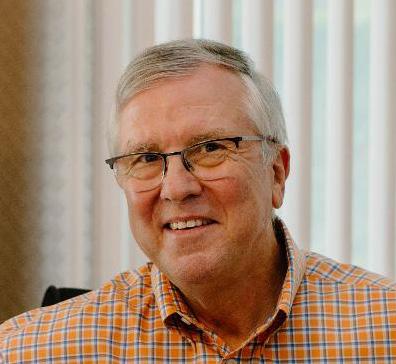
The use of recycled fibre pulp (RCP) in tissue production – produced via the processing of recovered paper – today makes up around 38% of the total fibres going into global tissue production, down from the peak of over 50% in 2000. But across all grades, the demand for recycled wood fibres has never been higher, and shows no signs of abating, while new primary fibres must always be coming into the supply chain in order to meet demand.
In 2017, the government of China launched its Operation National Sword policy to monitor and more stringently review recyclable materials imports, and as of 2021 a ban on imports of recovered paper came fully into effect. Before the policy, China was importing the vast majority of recyclables from North America and Europe for the past two decades. As of 2021, its exit from the market came fully into effect with the launch of the policy halting the import of plastics and other materials destined for its recycling processors, prohibiting the importation of 24 types of recyclable commodities beginning at the end of 2020.

So how has the global recycled paper sector changed since China’s complete exit from the market in 2021? Looking at the changing patterns in global recovered paper demand for the last few years, in the US saw a growth in demand of 3m tonnes from 2019 to 2021 to 35 m tonnes. Over that same time period, China’s demand for recovered paper decreased by 13 tonnes to 68m tonnes in 2021, Other Asia’s demand grew by 2m tonnes to 50m tonnes, and Western Europe’s Paper for Recycling (PfR) use declined by 3m tonnes to 48m tonnes.
Going forward to 2025, US recovered paper (RCP) demand is expected to grow by 6m tonnes from 2021, for the same time period, China’s RCP demand will grow 8m tonnes, Other Asia 11m tonnes, and PfR use in Europe will grow 3m tonnes. Despite the continued growth RCP demand from China, there is a decided shift to wood fibre-based projects for containerboard. The use of recycled fibre for tissue production is declining for four reasons:
• The downturn in the world’s use of printing and writing papers, thereby limiting supplies of the recovered office paper grades;
• Yields on recycled fibre have been
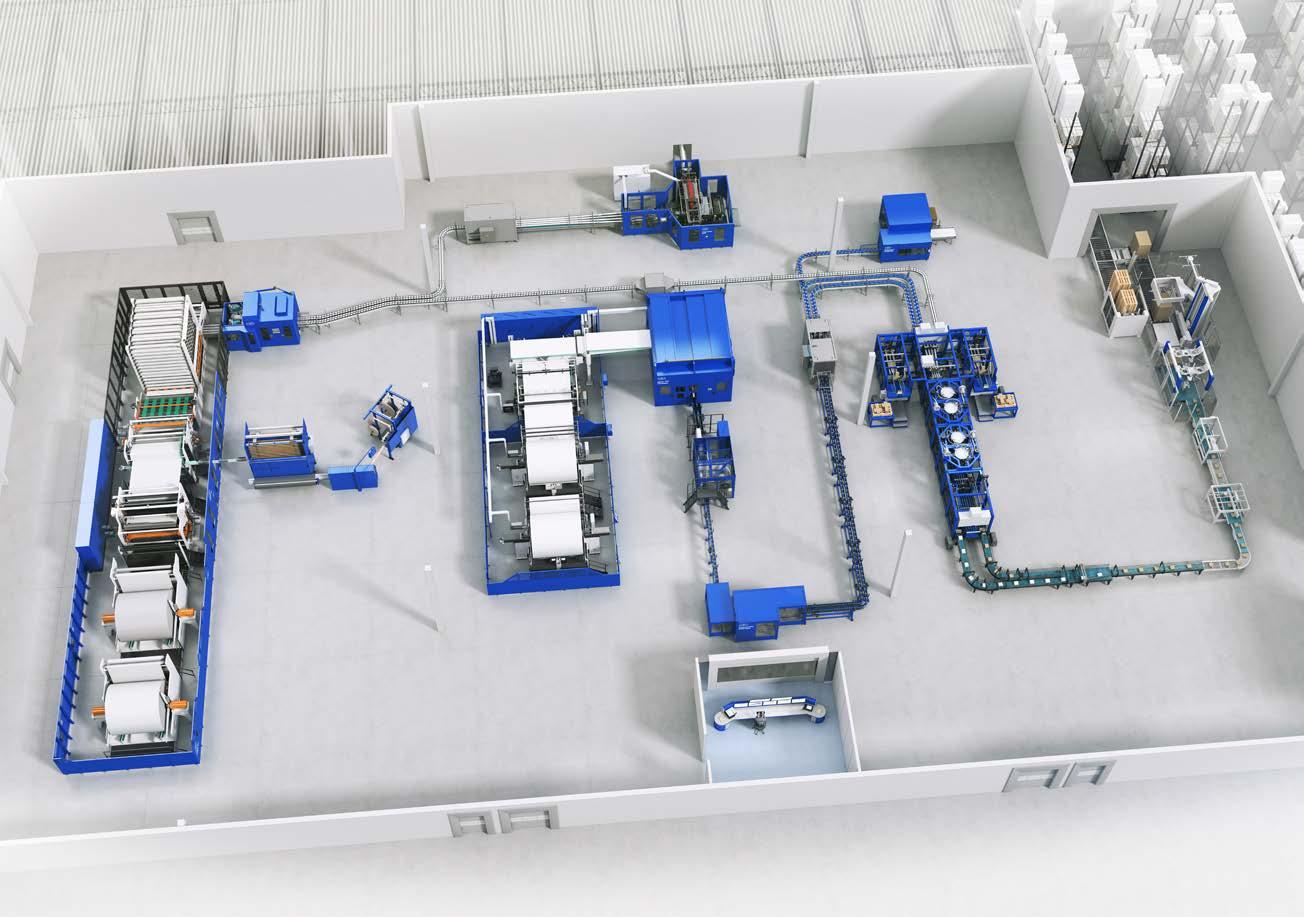
and a slow decline in developed Asia.
China’s tissue business is growing largely with virgin fibre (vs newsprint and paperboard sectors, which rely heavily on recycled fibre).
• China did not want to be bringing other nation’s ‘waste’ into their country –really somewhat of a greenwashing effect to placate their people on China’s poor environmental conditions.
• They wanted to spur local collection of recyclables – which has happened.
• They wanted to incentivise other nations to manage they own recyclables at home. An unusual motivation that has actually worked out – the US and Europe have been adding capacity to consume the recovered paper grades that used to go to China.
What we have seen is that there have been a number of effects on China’s paper industry as a result of its action, many of which are detrimental. It has seen substantially higher Old Corrugated Containers (OCC) and Mixed Paper prices than anywhere in the world –good for collectors/processors, not so good for paper mills. It has also seen that recycling infrastructure for collection and processing is booming in China, but the local OCC and other paper fibres are inferior quality (fibre strength wise) to US RCP.
Container board and corrugated box prices have risen, especially for export quality boxes. Higher outbound ocean container freight costs have also occurred because container boxes are not coming in with recyclables and instead must be routed through other Asian container hubs and often higher level of deadheading inbound.
US and Europe exports of RCP/PfR that once went to China have decreased and redistributed to other Asian markets. Perhaps most significantly we have also seen Chinese mill company expansions outside of China, particularly in Southeast Asia.
steadily declining;
• Processing, chemical and residual’s disposal costs have been increasing;
• Abundant supplies of bleached tropical hardwood pulps that once went primarily into printing and writing papers are now more used in tissue production.
Recycled fibre-based tissue is more prevalent in certain markets: North America (US, Canada, and Mexico), Europe, Middle East, and developed Asian countries (Japan, Korea, etc). Regional trends in recycled fibre use in tissue show that there is a slow decline in North America, recycled fibre use is declining in Europe and the Middle East,
China’s source of recovered paper also makes for interesting viewing. RCP net imports reached a peak 32.3m tonnes in 2015, falling to 28.4 in 2017, 18.8 in 2018, 11.6 in 2019, and 6.2 in 2020. In comparison, domestic RCP collection was 53.8m tonnes in 2015, 61.6 in 2017, 62.8 in
2018, 63.9 in 2019 and 59.2 in 2020.
• Increase domestic RCP collection – but there aren’t enough boxes in the China waste stream for the demand. This will change somewhat as China shifts its focus to domestic economy growth.
• Pulp – buy more unbleached kraft pulp.
medium – imports of containerboard have increased sharply in the last three years. CB imports were one million MT in 2016 and rose to > seven million MT in 2020, forecasted to be > nine million MT in 2022.
• Import RCF pulp from US or other Asia/Pacific Rim countries, especially Southeast Asia.
• Virgin fibre – China is planting trees (mostly tropical hardwoods) and importing softwood. The number of virgin pulping projects (about a dozen of them - mostly semi-chem, but some kraft) is accelerating.
• Increased use of ‘alternative’ fibres: bamboo, bagasse, wheat straw – but these are almost all very short fibres, possibly suitable for medium, but not linerboard.
Chinese fibre sources in 2017 include 56m tonnes of domestic RCP collection, 26m tonnes of RCP imports, 20.2m tonnes of virgin pulp production, 9.5m tonnes of domestic pulp production, and zero recycled pulp imports. In 2021, it saw 60.1m tonnes of domestic RCP collection, 24m tonnes of virgin pulp imports, 10m tonnes of domestic pulp production, 3m tonnes of recycled pulp imports and 0.4m tonnes of RCP imports.
In 2015, US recovered paper exports to China were 15.7m tonnes per year, dropping to 12m tonnes in 2017, 8.3m tonnes in 2018, 5.8m tonnes in 2019, 4.2 in 2020 and zero in 2021.
In terms of the US mixed paper category consumption market size, in 2021 4.1m tonnes were recorded for domestic US mill demand, while 2.6m tonnes of demand were exported. In 2025, it is forecast to be 5.2m tonnes, compared with 2.1m tonnes of export demand. China’s import ban has also impacted pricing of US mixed paper prices: a high of $117 was recorded in 2011, and this has since fallen to $50 in 2015, risen to $75 in 2017, fallen to -$2 in 2019, and then risen again to $75 in 2021.
Globally volume is limited volume, an expensive grade. China supporting expansion of grade capacity, especially in Siberia, Nine Dragons UKP pulp mill in Maine. UKP imports in 2017 were 640,000 MT, 2020 - ~1 million MT, and 1st H 2022 – 771,000. Sun Paper is building a UKP mill in China.
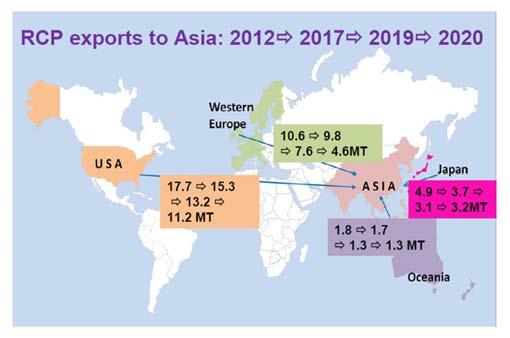
• Converters importing linerboard and
China received 49% of US OCC exports, India 15%, Vietnam 6%, S. Korea 6%, Indonesia 5%, Taiwan 5%, all others 8%.
2021 ~10.5m tonnes
India received 20%, Mexico 10%, Indonesia 12%, Taiwan 10%, Thailand 15%, Malaysia 7%, South Korea 6%, all others 13%.
Other Asian countries have asked themselves – if it is not good for China to import Mixed Paper why should it be good for us?
• Vietnam will no longer take imports of Mixed Paper as of the end of 2021.
• Indonesia and India have been back and forth on the level of prohibitives they will allow in Mixed Paper imports and inspections needed. Indonesia has settled in at 2% prohibitives.
• The latest country to announce a ban on imports of Mixed Paper is Malaysia.
• The above four countries are/were large importers of Mixed Paper from North America.
• There is some consensus in Asia that the prohibitives level in Mixed Paper should be capped at 0.5 to 1%, very difficult to obtain economically from North American MRFs.
• North American domestic mills are in a much better position to use Mixed Paper – especially if the MRFs can get the prohibitives level down to 2 – 4% range.
For the first half of 2022, exports of RCP were down ~18% from the same period in 2021 at just over one million tonnes. Domestic RCP consumption was down 0.6% from the same period in 2021 at just about eight million tonnes.
Recycled fibre use in Europe paper and paperboard production
European Paper Mill Raw Material
Consumption:
paper board machines. Major drawback is handling at the consuming mills – has to be cut/slabbed to put in the pulper.
• Dry pulp – made from shredded corrugated box cuttings (DLK).
• Wetlap – lowest cost to produce: two significant downsides – transit time has to be kept to a minimum (bacteria growth) and cost of shipping a lot of water.
Typical ‘safe’ transit time for wetlap pulp is about three weeks.
Some of the new wetlap projects indicate their pulps are good for up to seven weeks of transit time.
Paper for recycling 49.5%
Integrated Pulp - 21.6%
Market Pulp 17.8%
Non-fibrous material 11.1%.
Europe recycled fibre utilisation by grade 50.7m tonnes: Containerboard & Kraft 59%, Mixed Grades 15%, Newspapers & Magazines 13%, Other grades, including High Grades 9%
Recycled fibre pulp (RCF) is produced using recovered paper (RCP) that has been processed through state-of-the-art fibre stock preparation systems, formed, and then dried or dewatered and shipped in bales or rolls. It is a new grade of pulp which did not exist before 2017 and is now a small but still growing market at ~3m tonnes per year of global capacity.
Global virgin fibre Unbleached Kraft pulp capacity is ~ 4m tonnes per year and is also increasing.
In comparison, global bleached market pulp production is ~50m tonnes.
Multiple RCF pulp grade options include:
• ‘Brown’ pulp, suitable for linerboard
• ‘Grey’ pulp, suitable for boxboard and medium
• Brown ‘Dry’ pulp make from corrugated box cuttings (DLK)
List pricing for RCF pulp over the last two years has been between $450 and $525 (USD)/tonne, but recently falling to as low as $400/tonne.
There are four types of RCF pulp;
• Baled dried pulp – the predominant form: standard way most pulps are produced and handled by consuming mills.
• Rolls – can be produced on existing
China imported 1.34m tonnes of RCF pulp in the first half of 2022, an increase of almost 20% over the same period in 2021. Although there has been some recycled pulp production activity in India and the US, Southeast Asia has had the most RCF pulp project activity.
Operating RCF pulp mills (capacity numbers are metric tonnes per year): –
• Nine Dragons, Bentong, Malaysia, 480,000 – wetlap
• Sun Paper, Xepon, Laos, 400,000 –air dry pulp
• Lee & Man, Bago, Myanmar, 340,000 – wetlap
• Lee & Man, Selangor, Malaysia, 400,000 – wetlap – Shanying, Thailand, 300,000.
Lee & Man, Nine Dragons and Jingxing Holdings have three more Malyasian RCF pulp projects coming by the end of 2023.
To fibre the many Malaysian new mills, the country’s imports of US OCC in the first half of 2022 are up over 40% from 2021. One strategy that has appeared: Chinese mill company RCF pulp projects are being built with the plan being to convert the operations to containerboard as the incountry demand warrants it
Chinese mill company RCF pulp activity in the US
After a flurry of announcements of six RCF pulp mill projects in the US only two have come to fruition:
• ND Paper (Nine Dragons) has started up two of a planned four operations
• Shanying International cancelled their project – Century Sunshine cancelled their project.
There have been some limited roll and baled unbleached RCF pulp produced on existing paper machines in the US.







































































































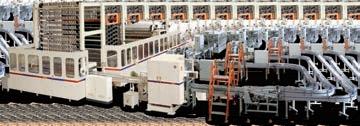

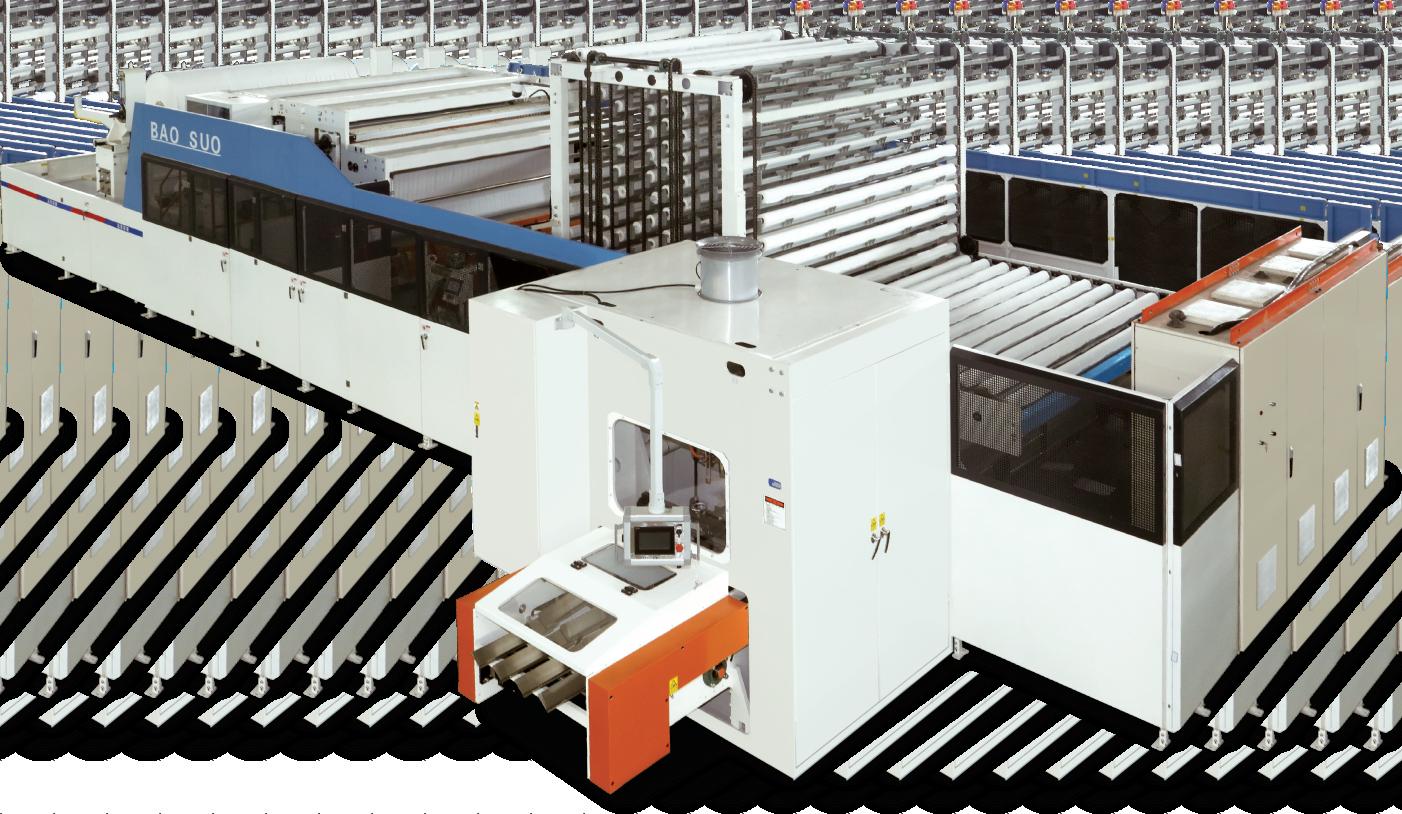

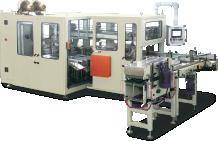
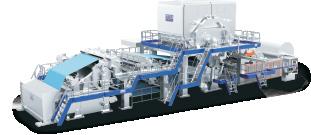
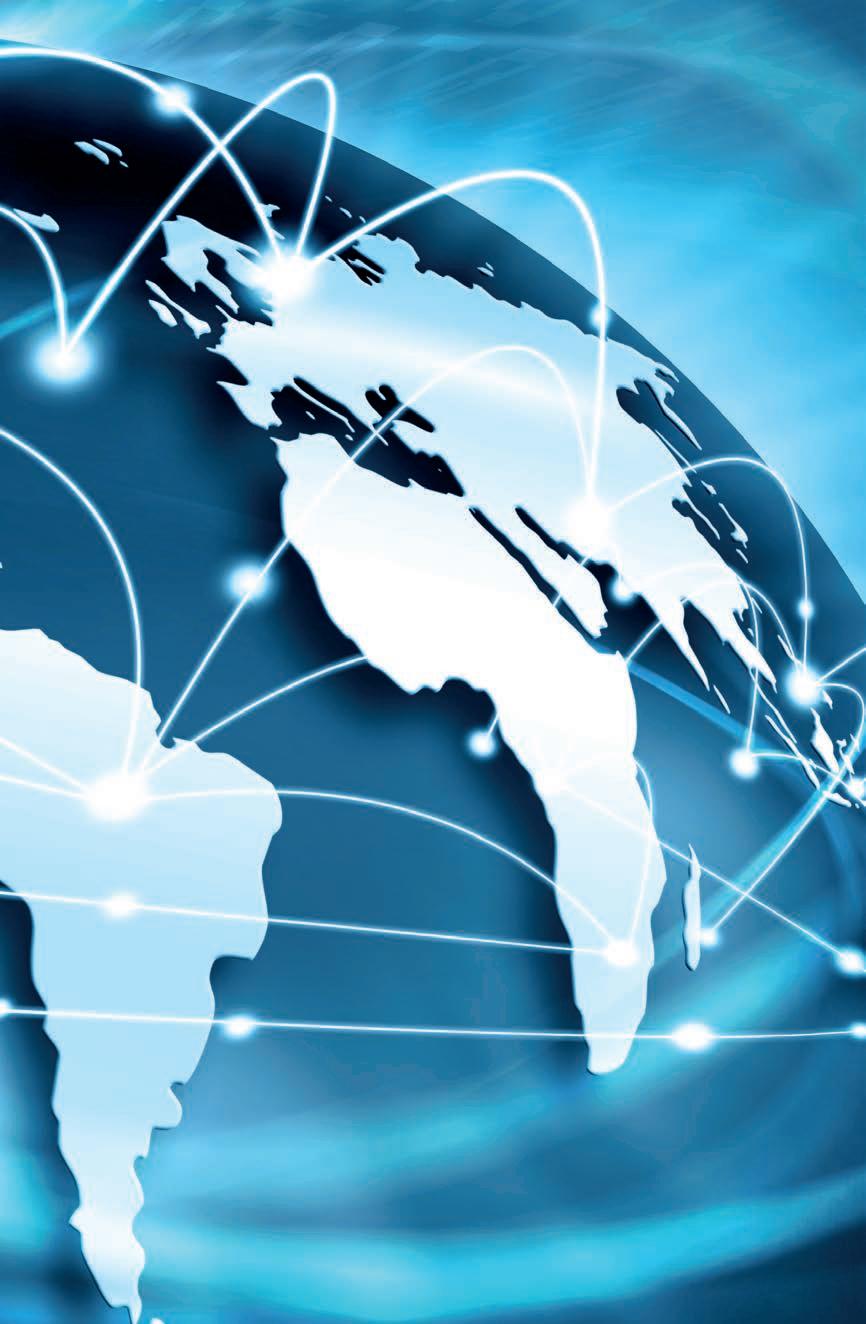
Tissue World Magazine is the leading, independent publication and online resource for the global tissue industry. We’re dedicated to publishing essential information, analysis, and opinion on breaking trends in business, technology, regional developments and sustainability, to keep tissue professionals up to date.
Connect with your community, differentiate your brand and grow your business globally with the leading publication for your industry!
From print through digital, with webinars, whitepapers and more, download the media pack here:
Get in touch today to discuss the opportunities and solutions: info@tissueworld.com
Join the conversation: